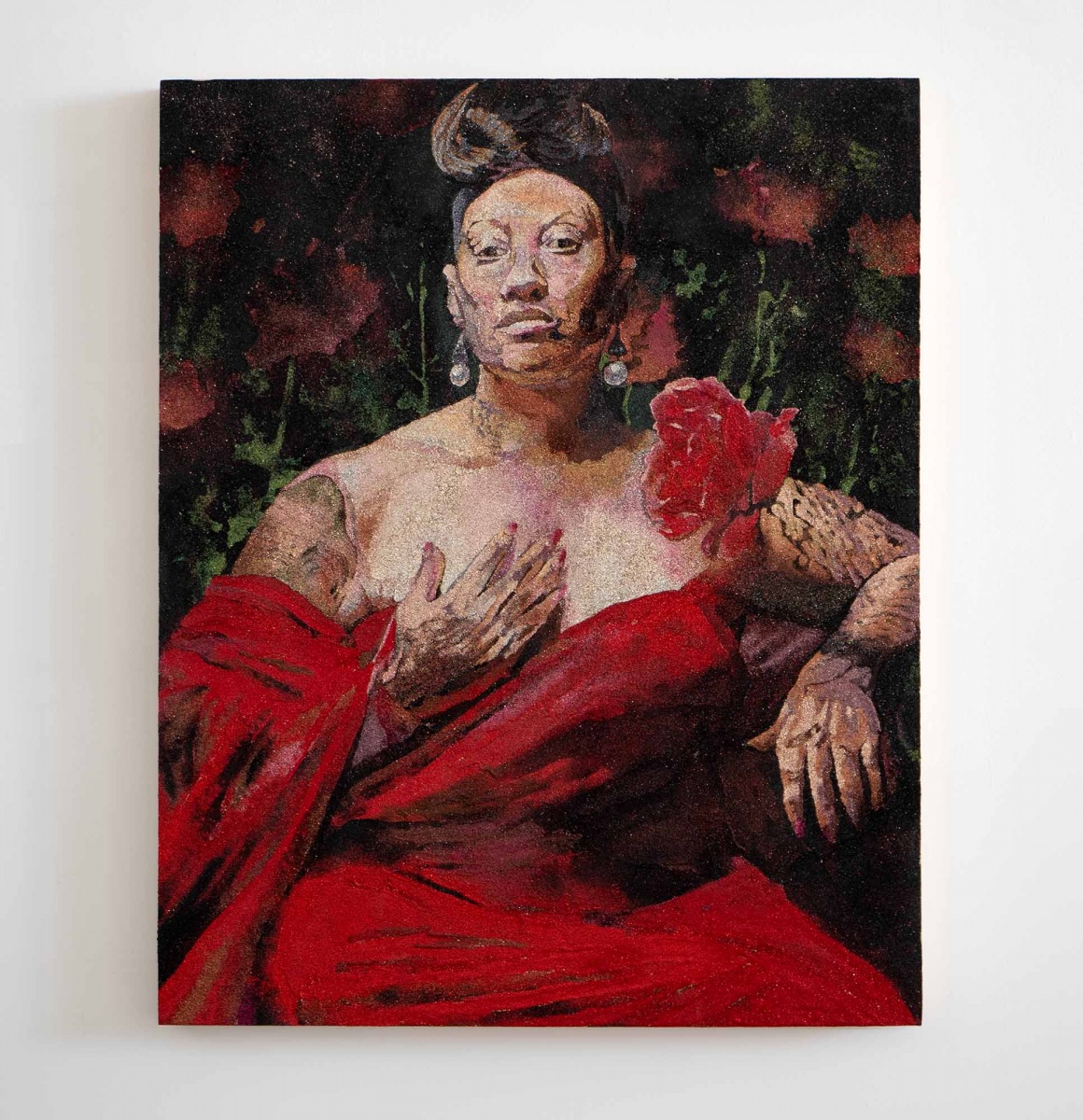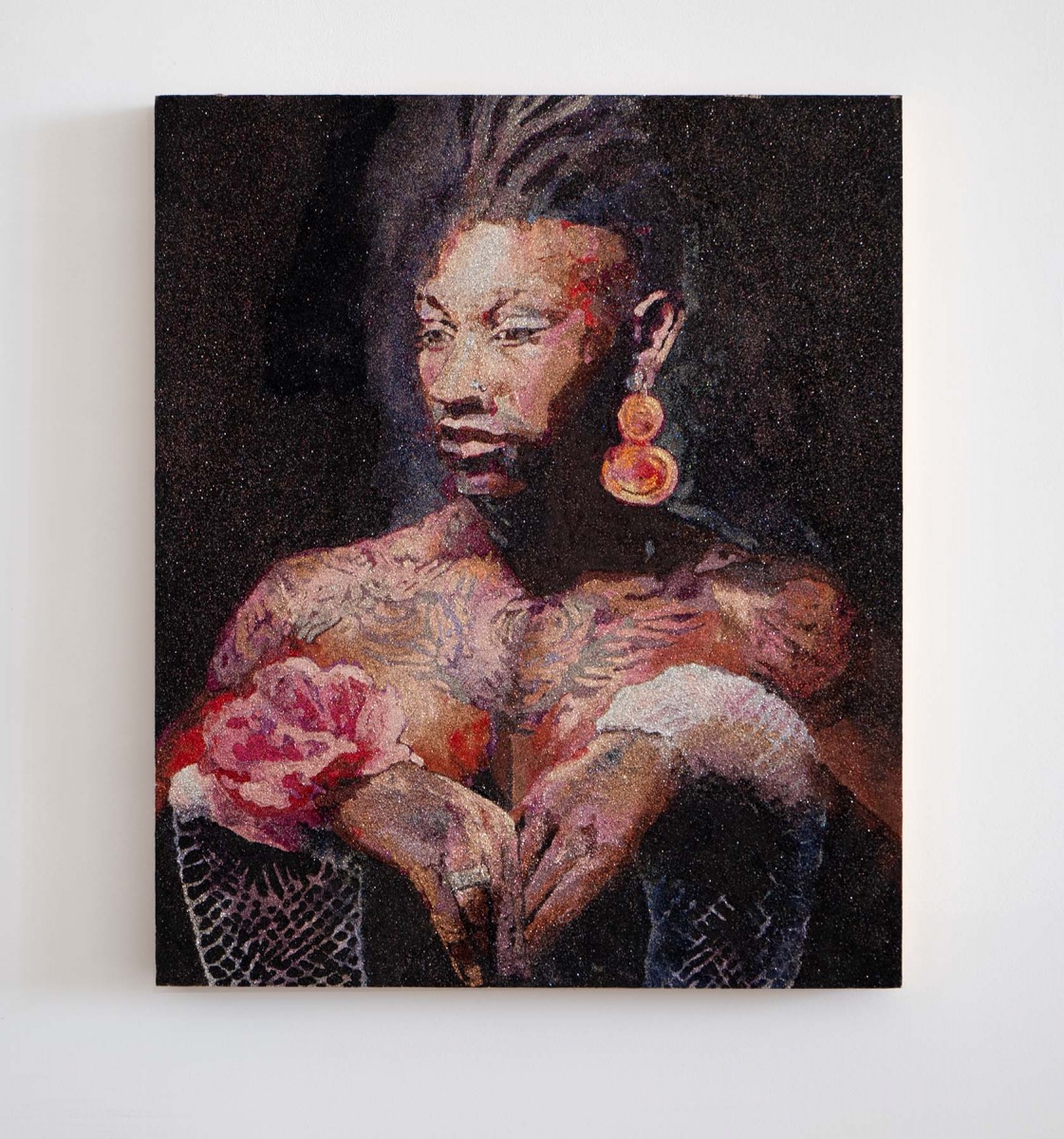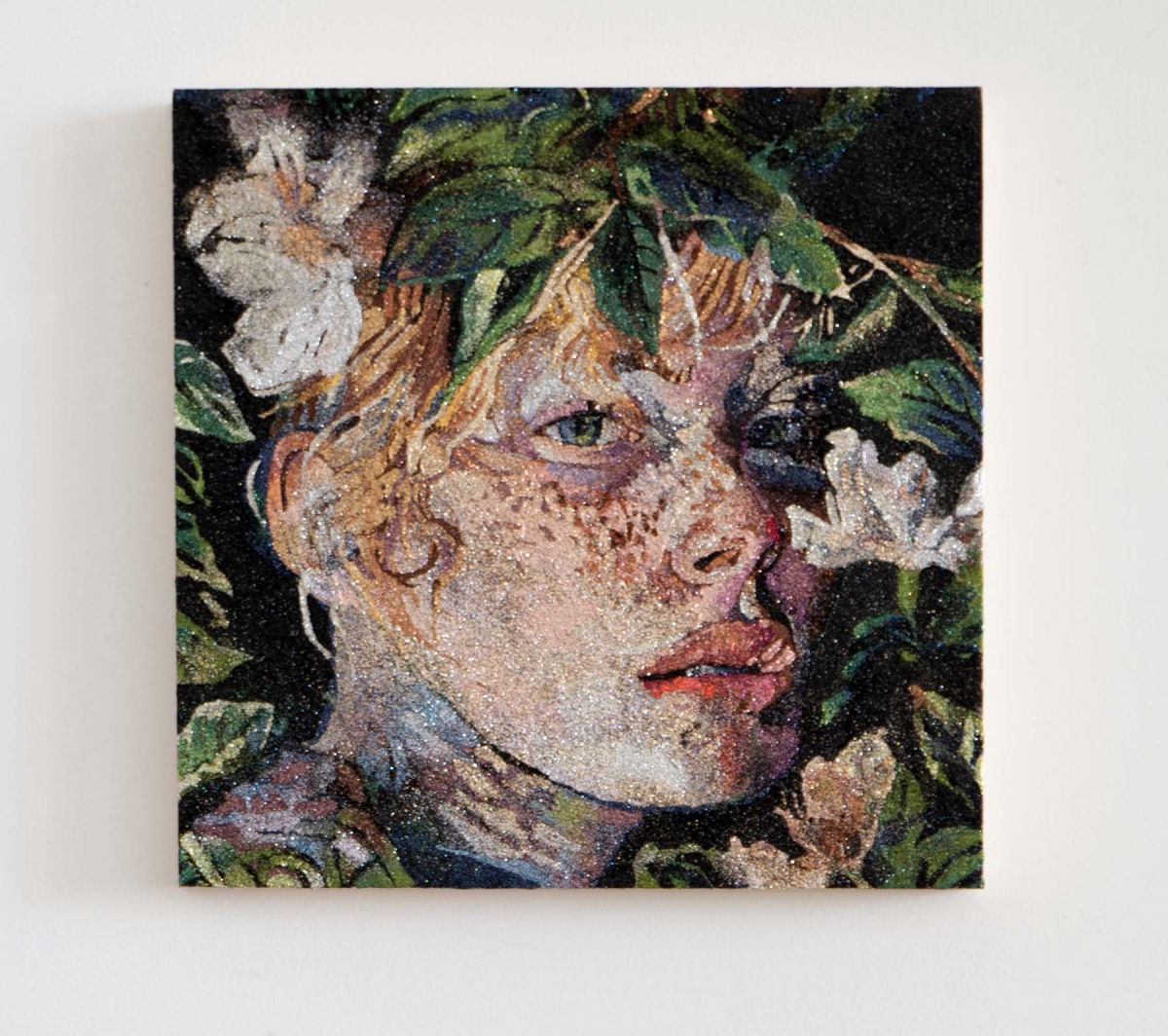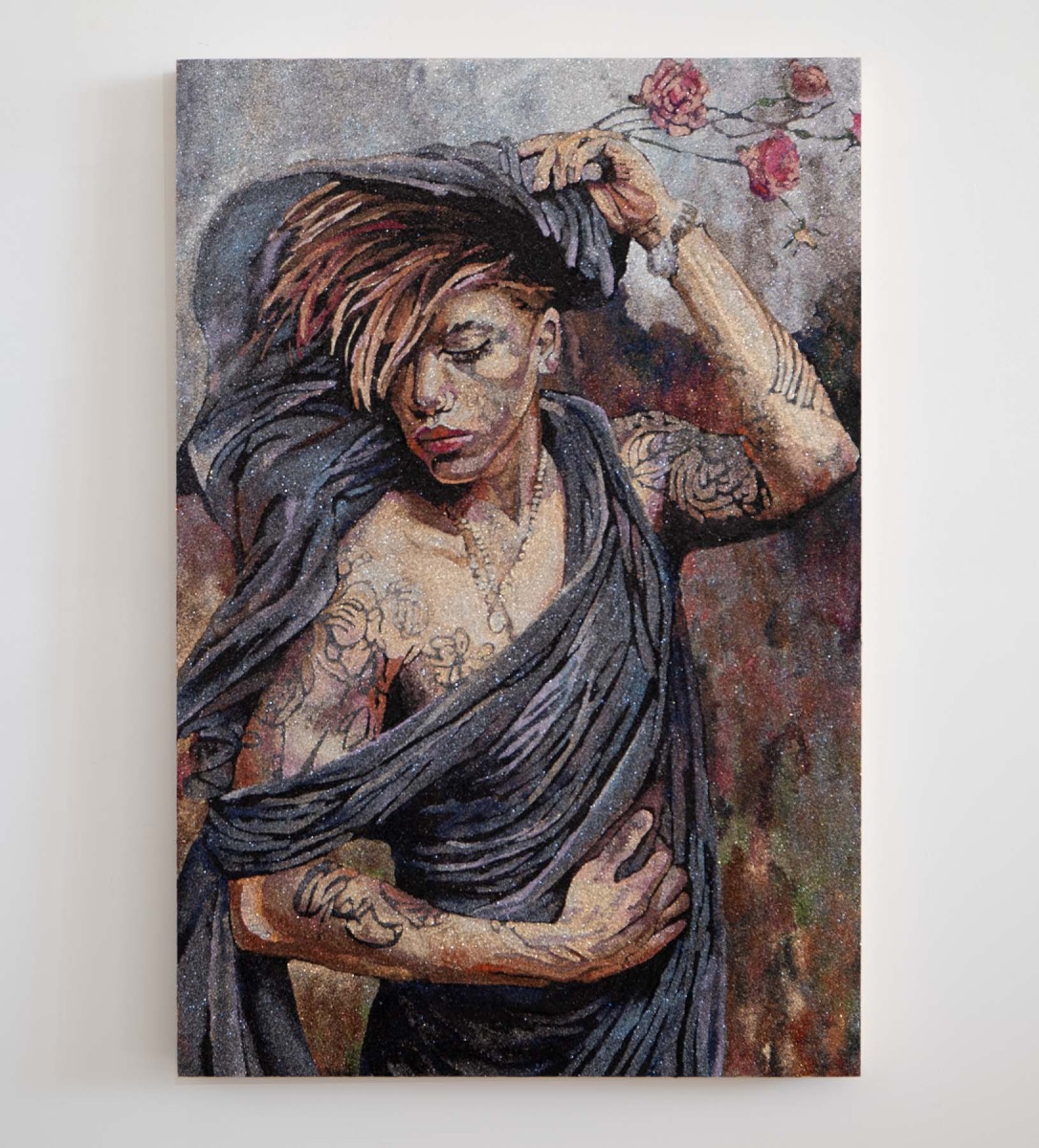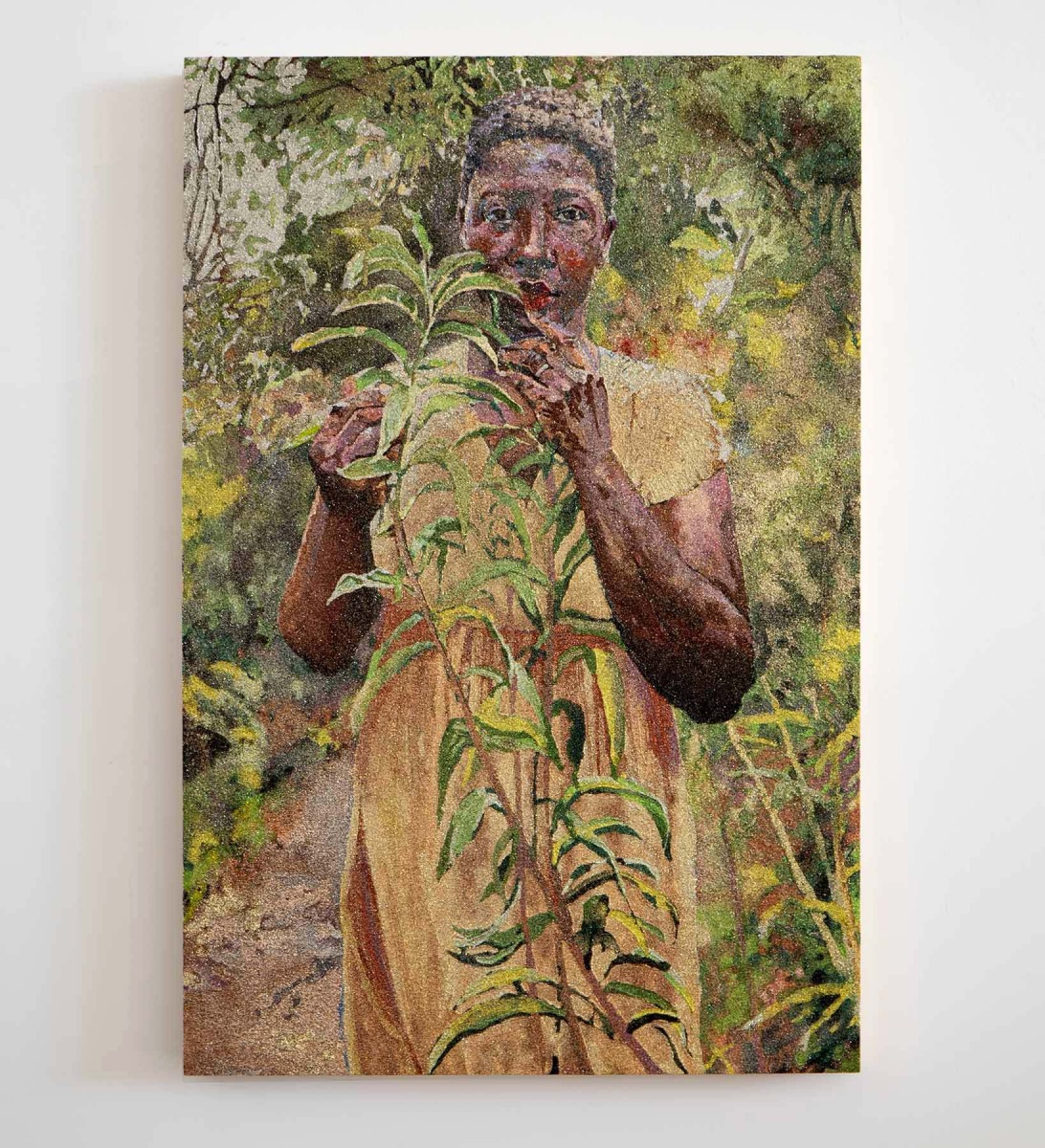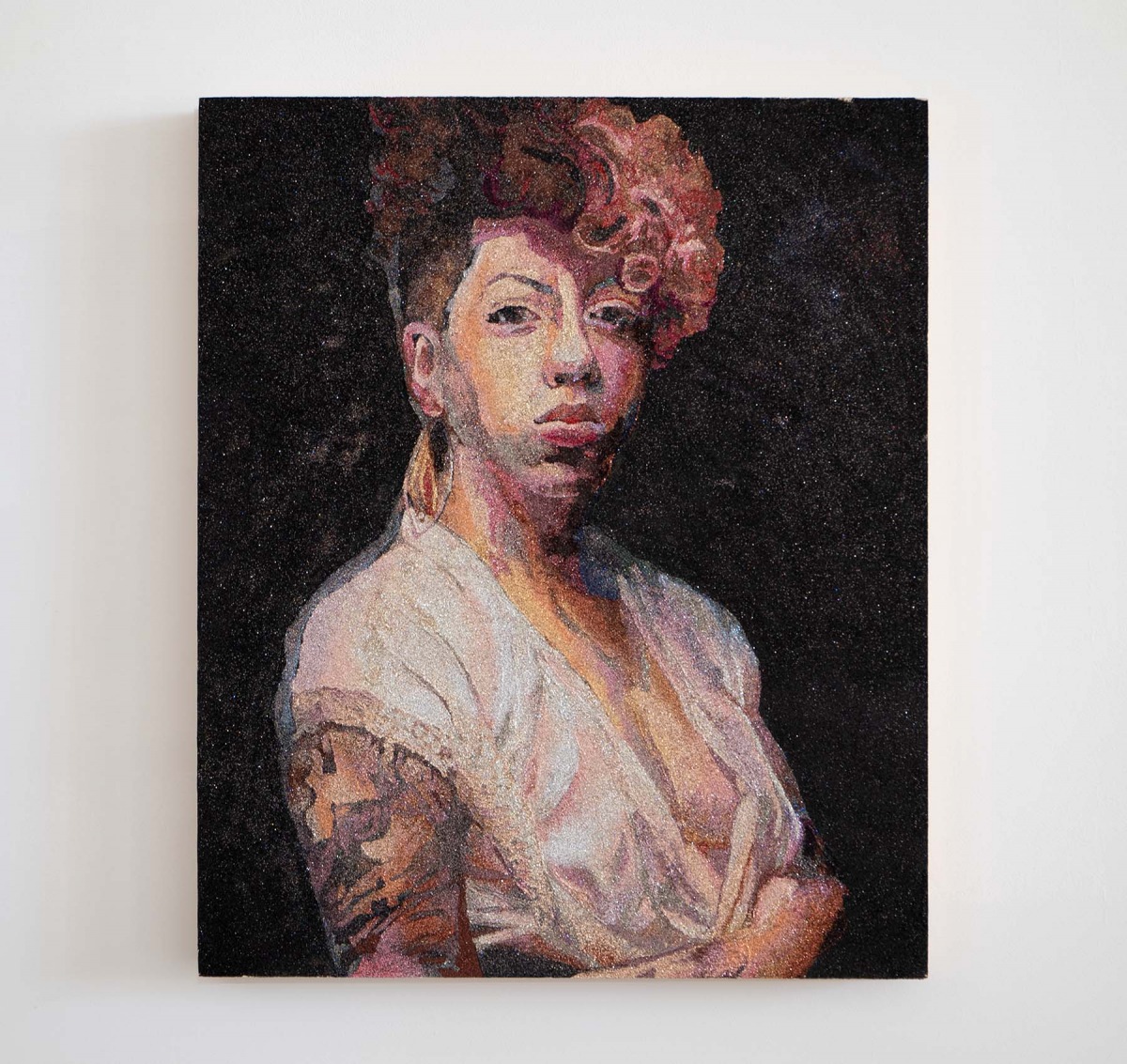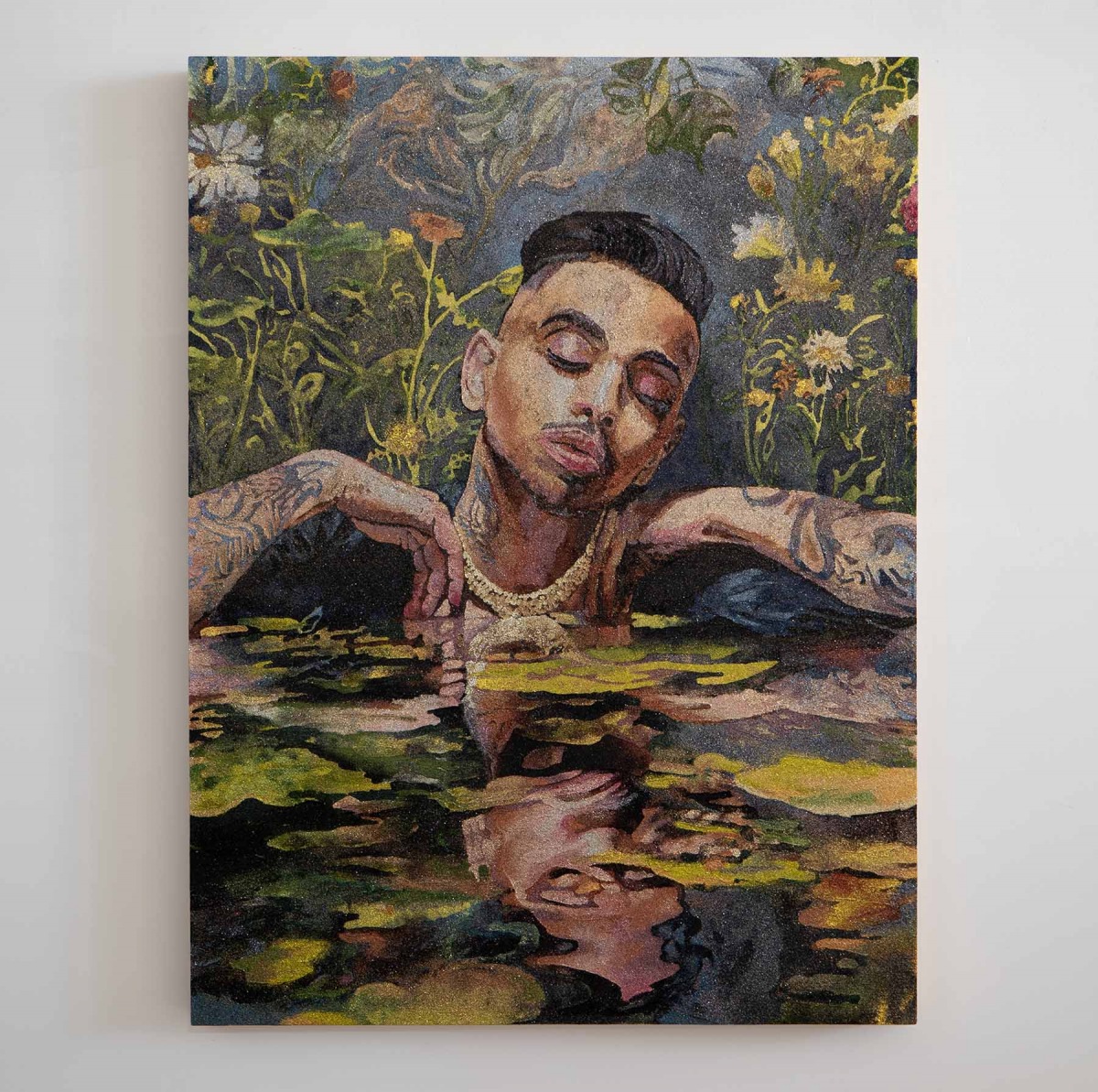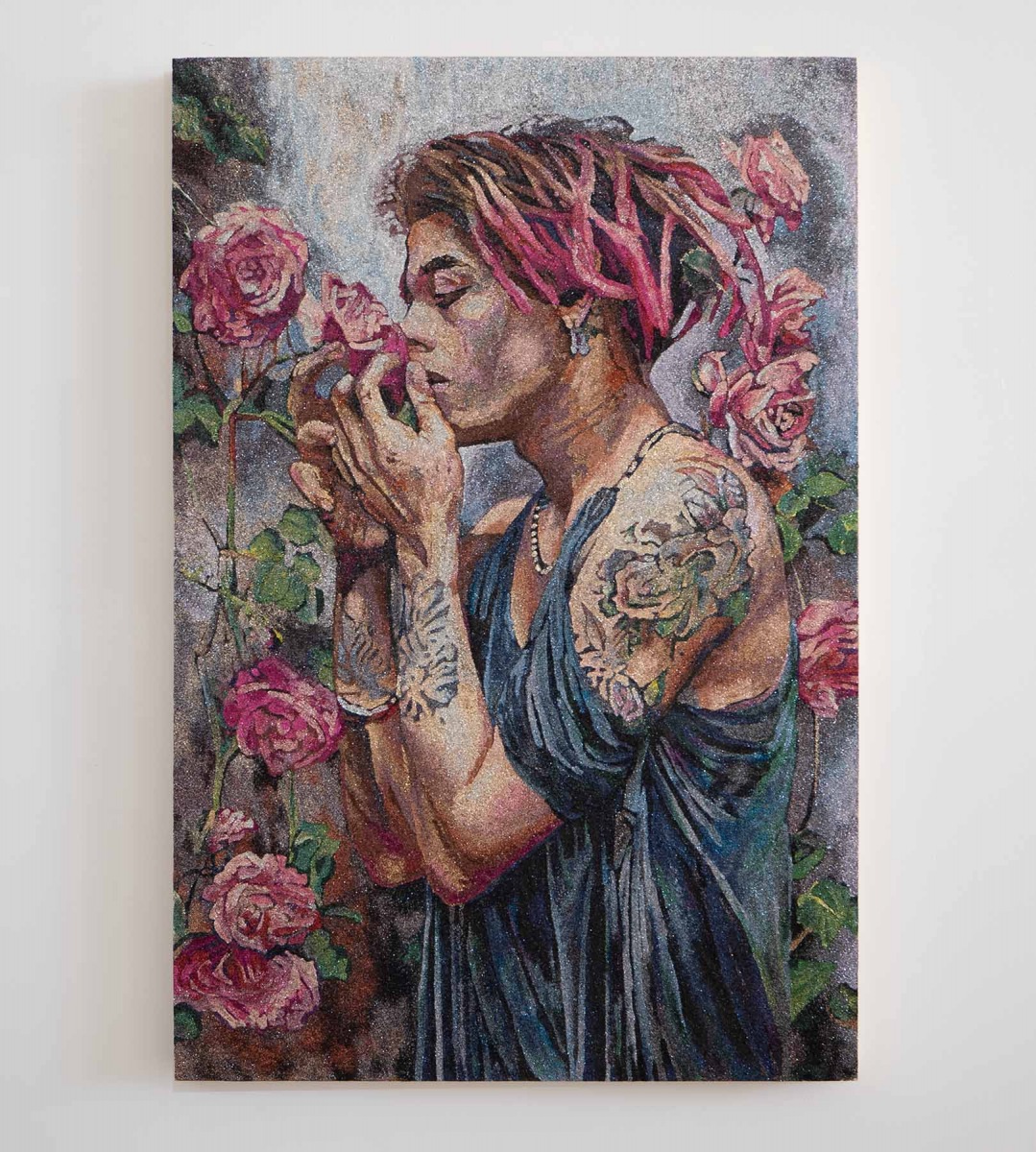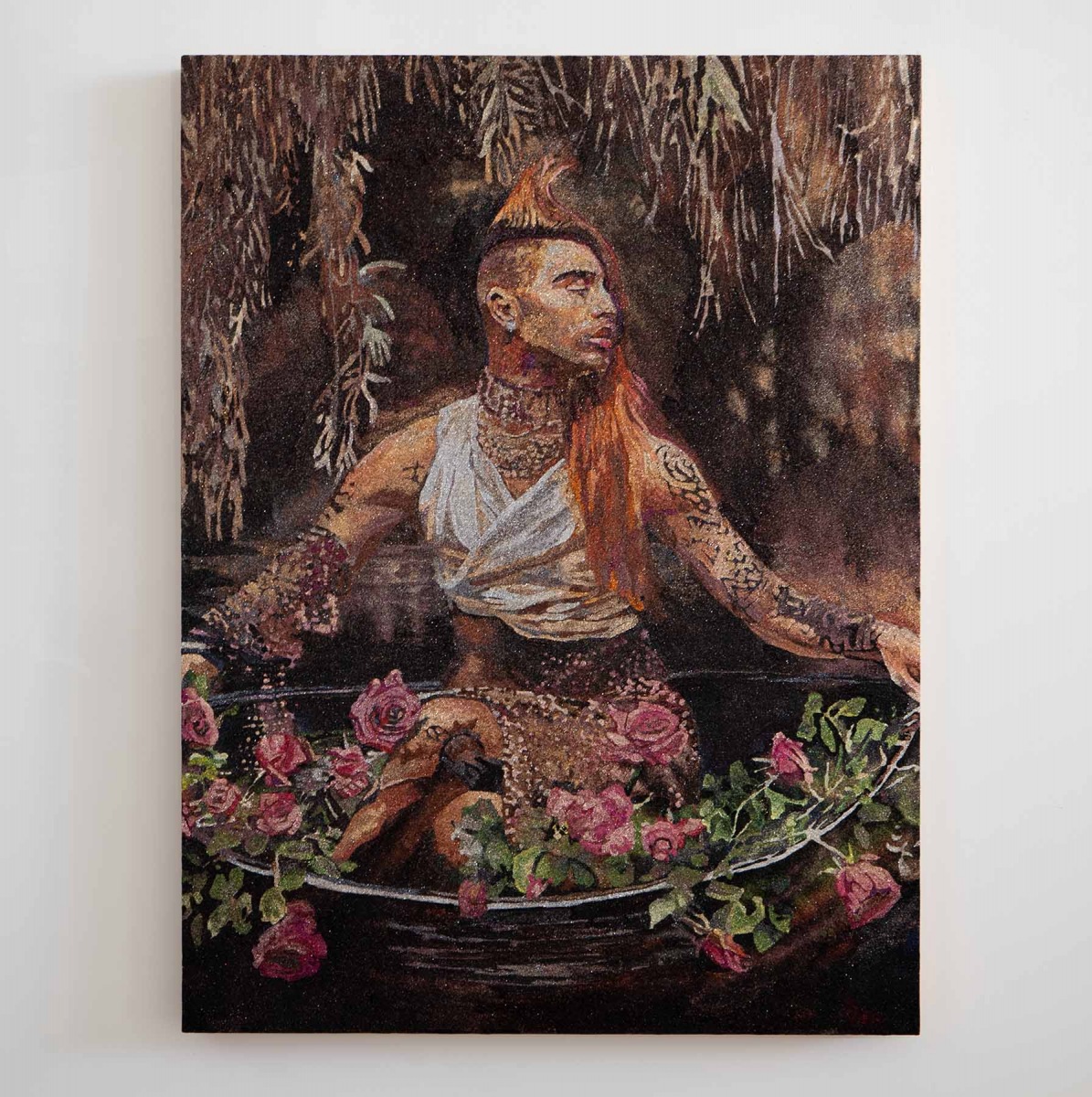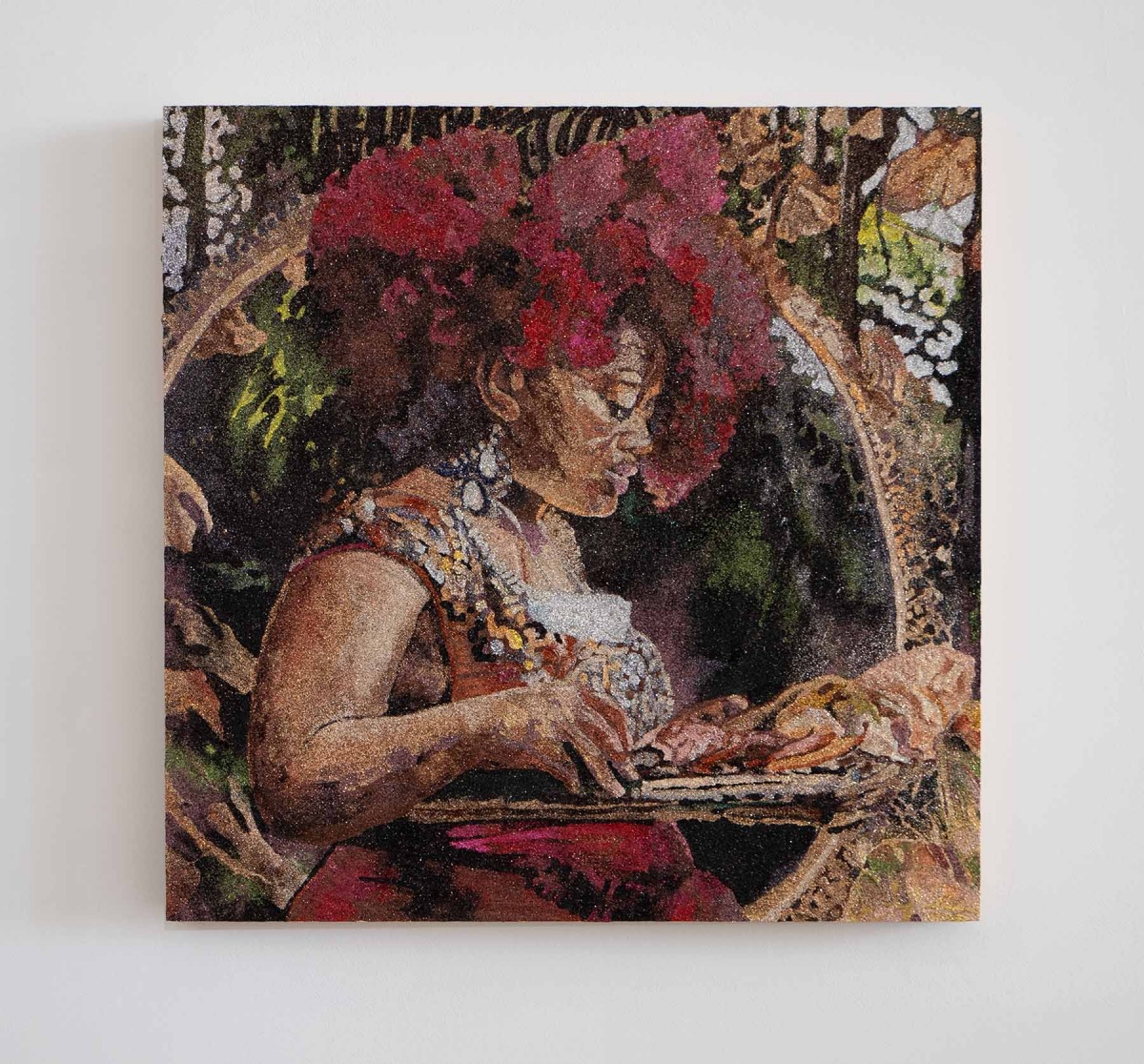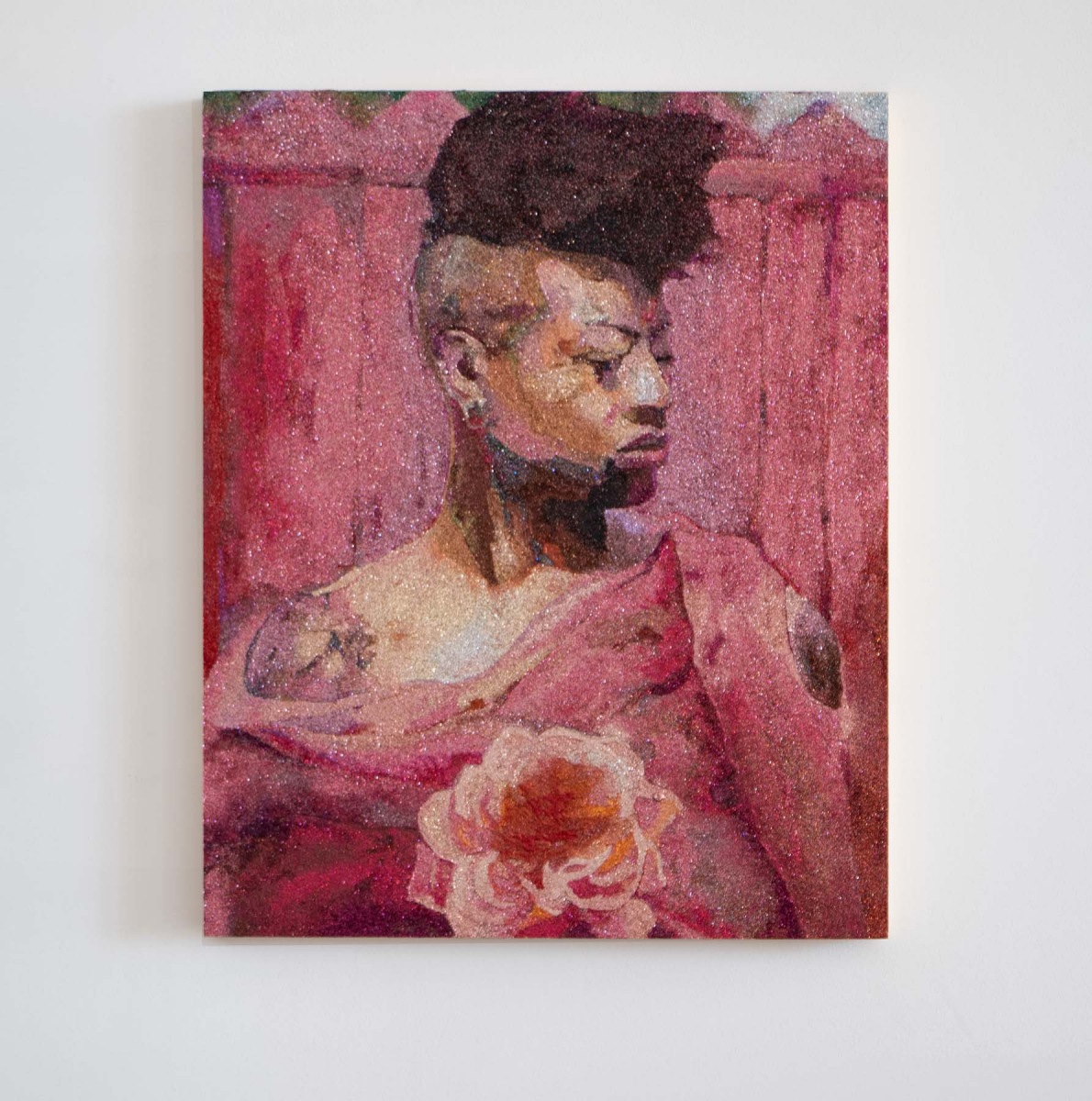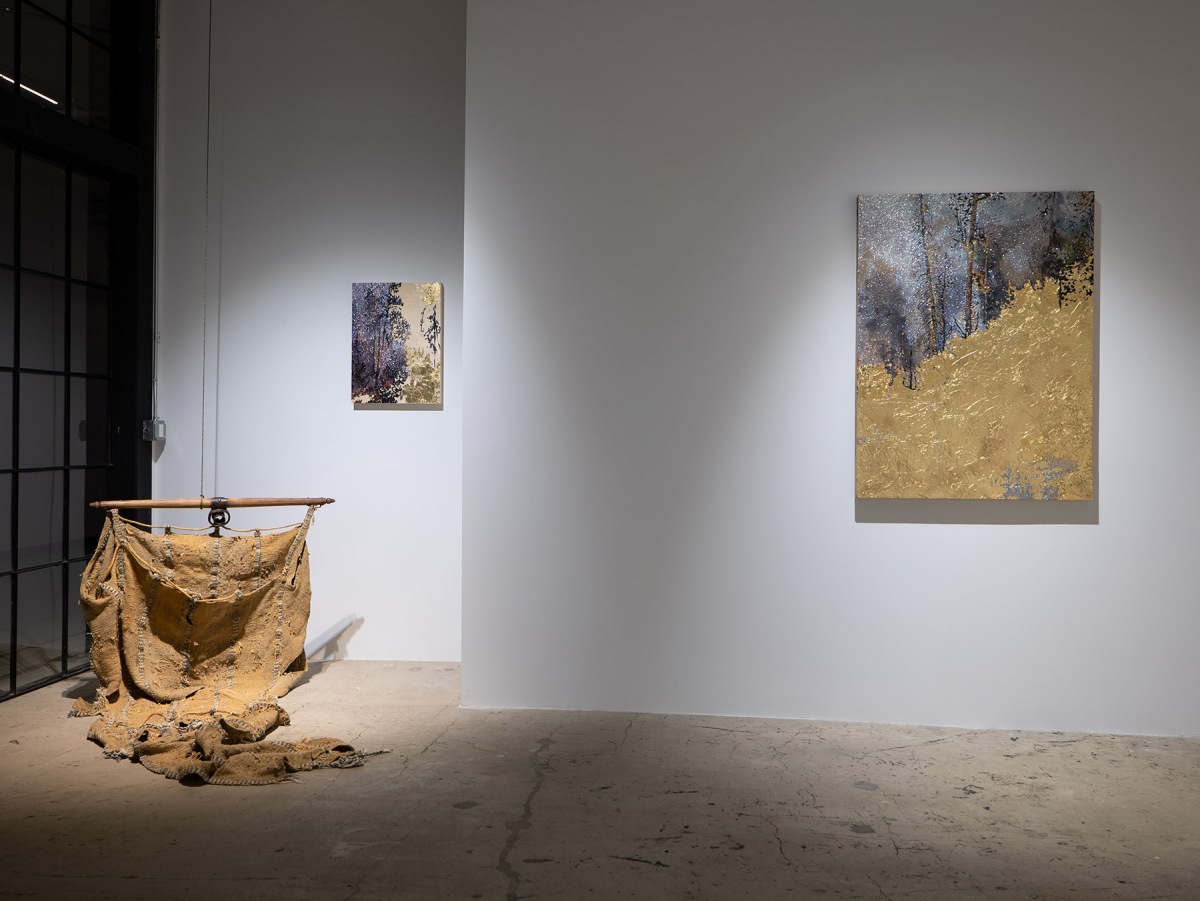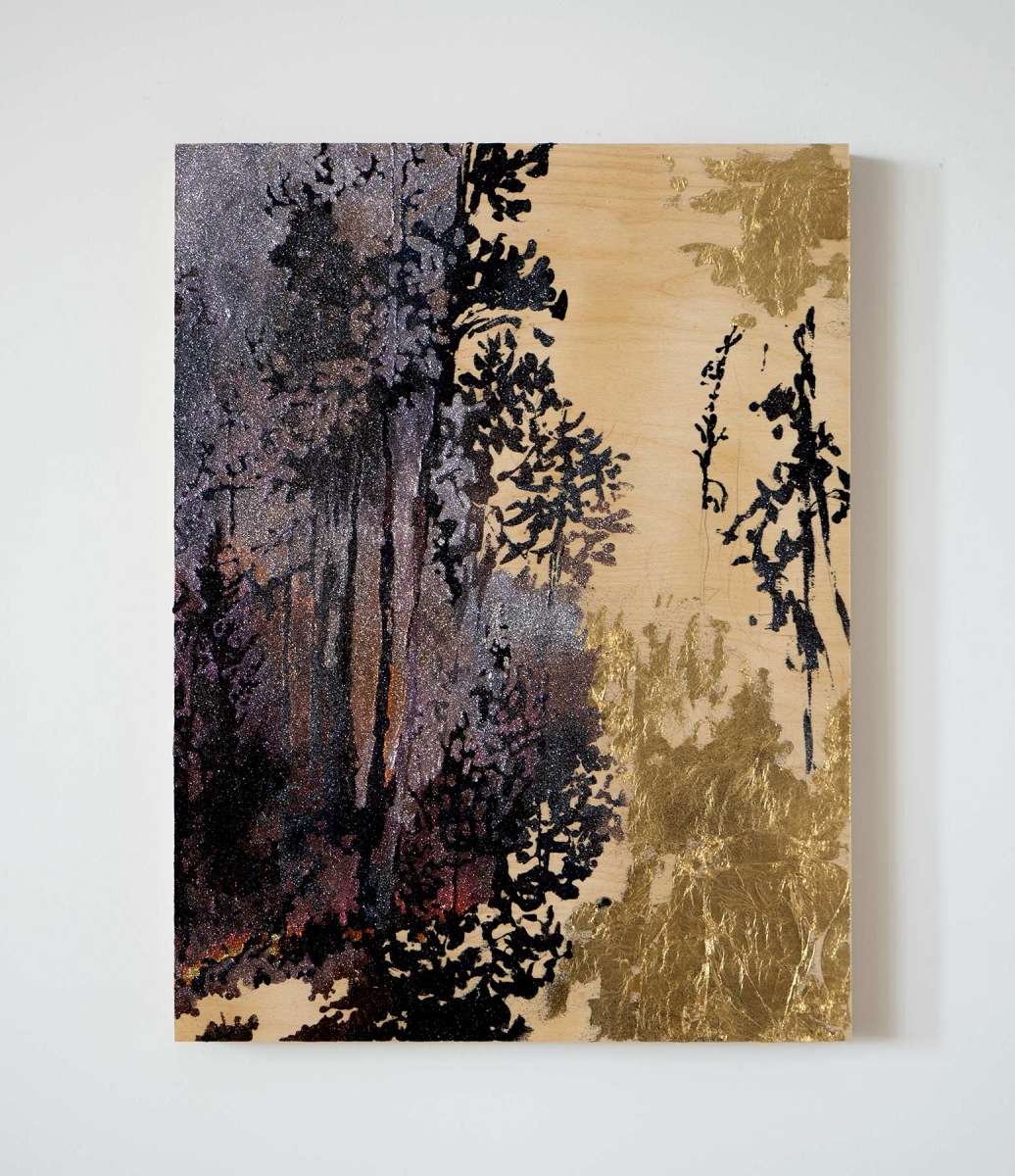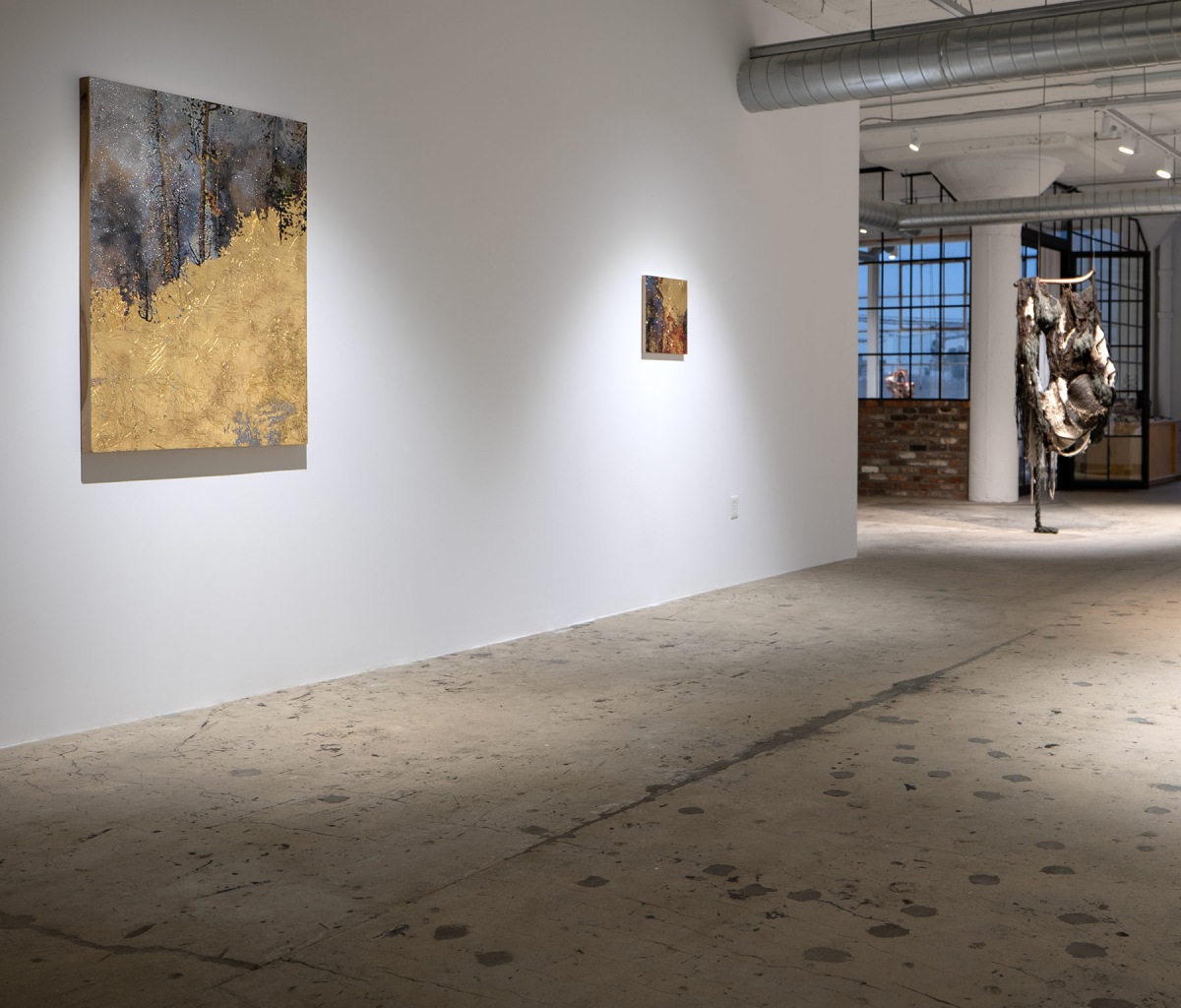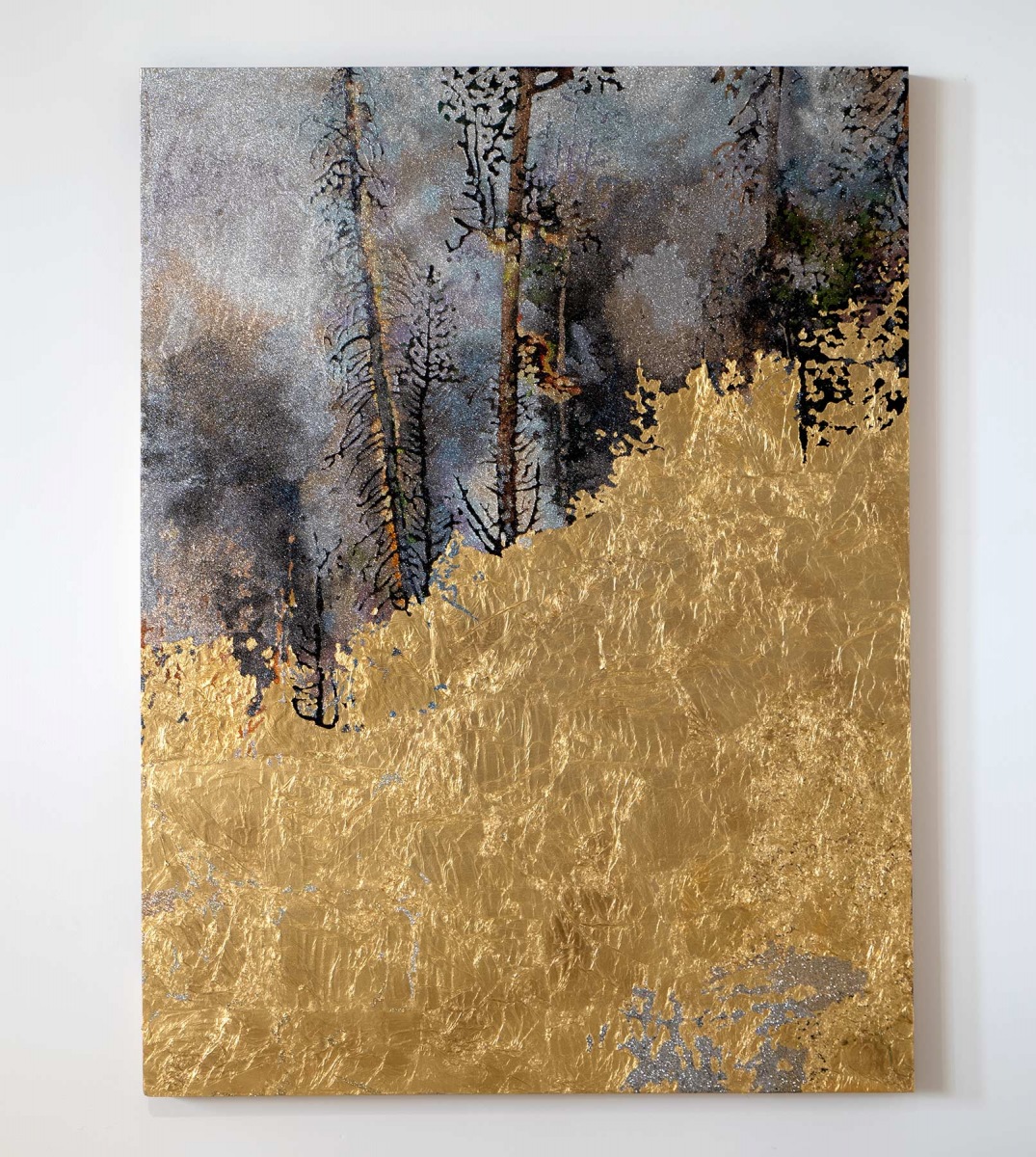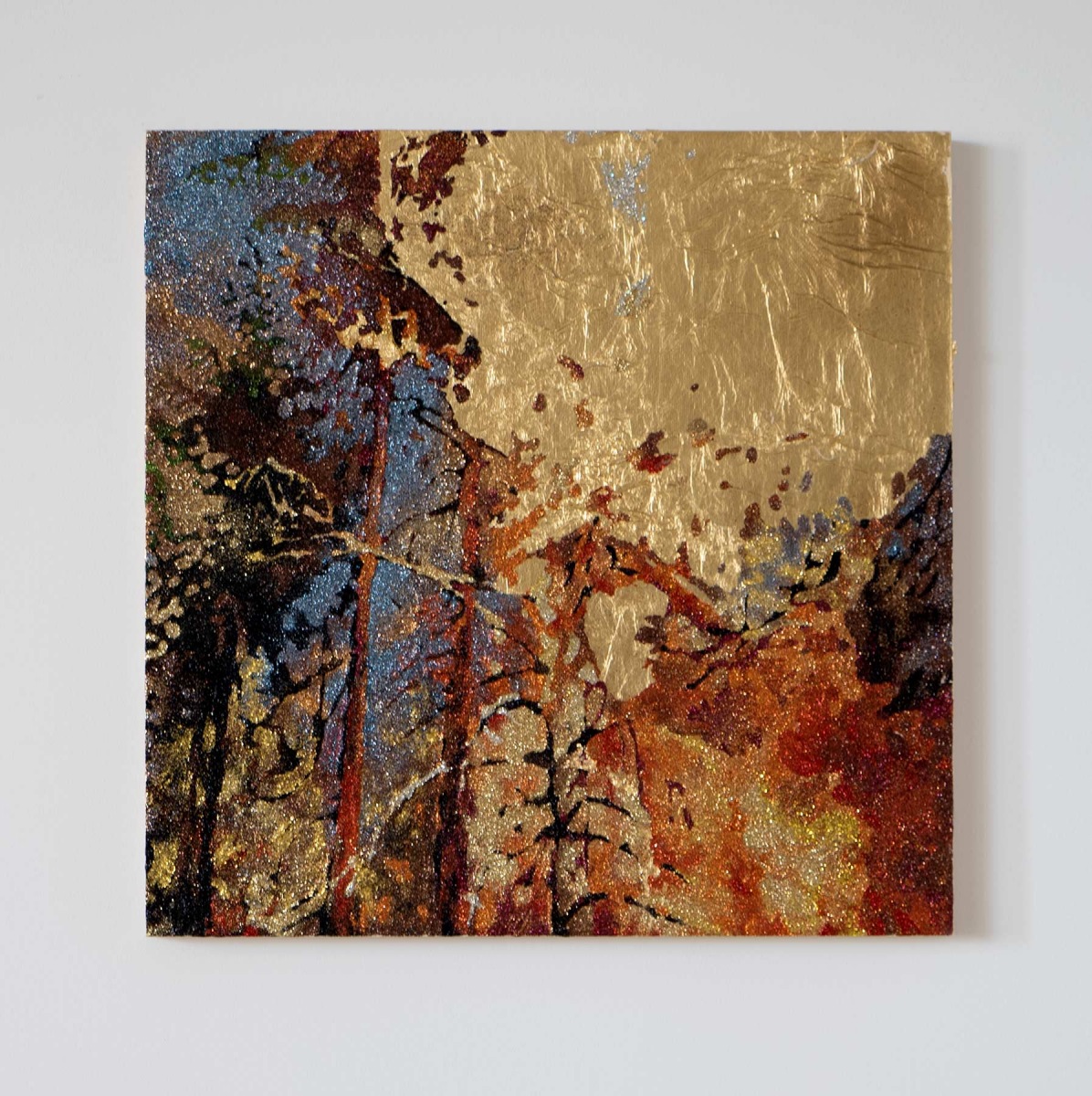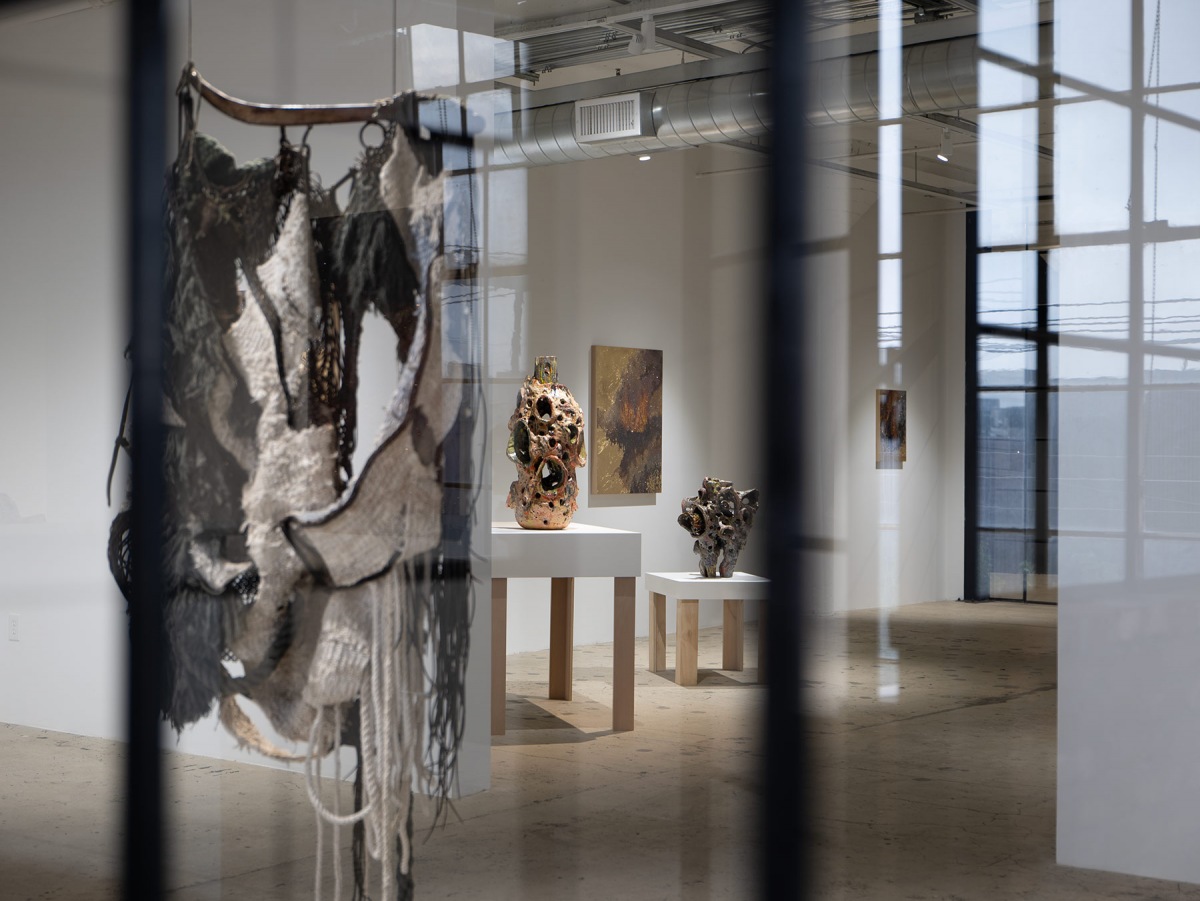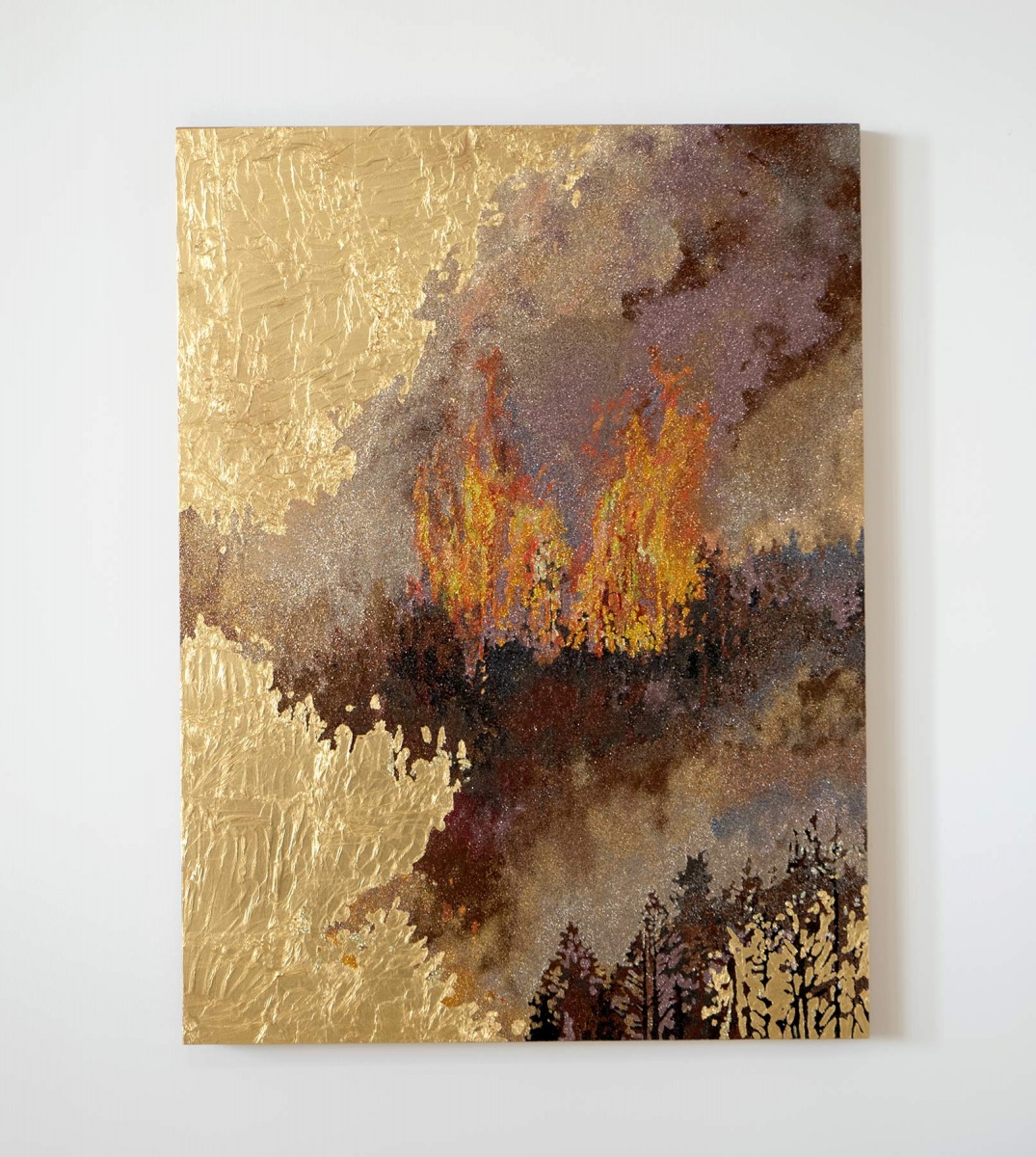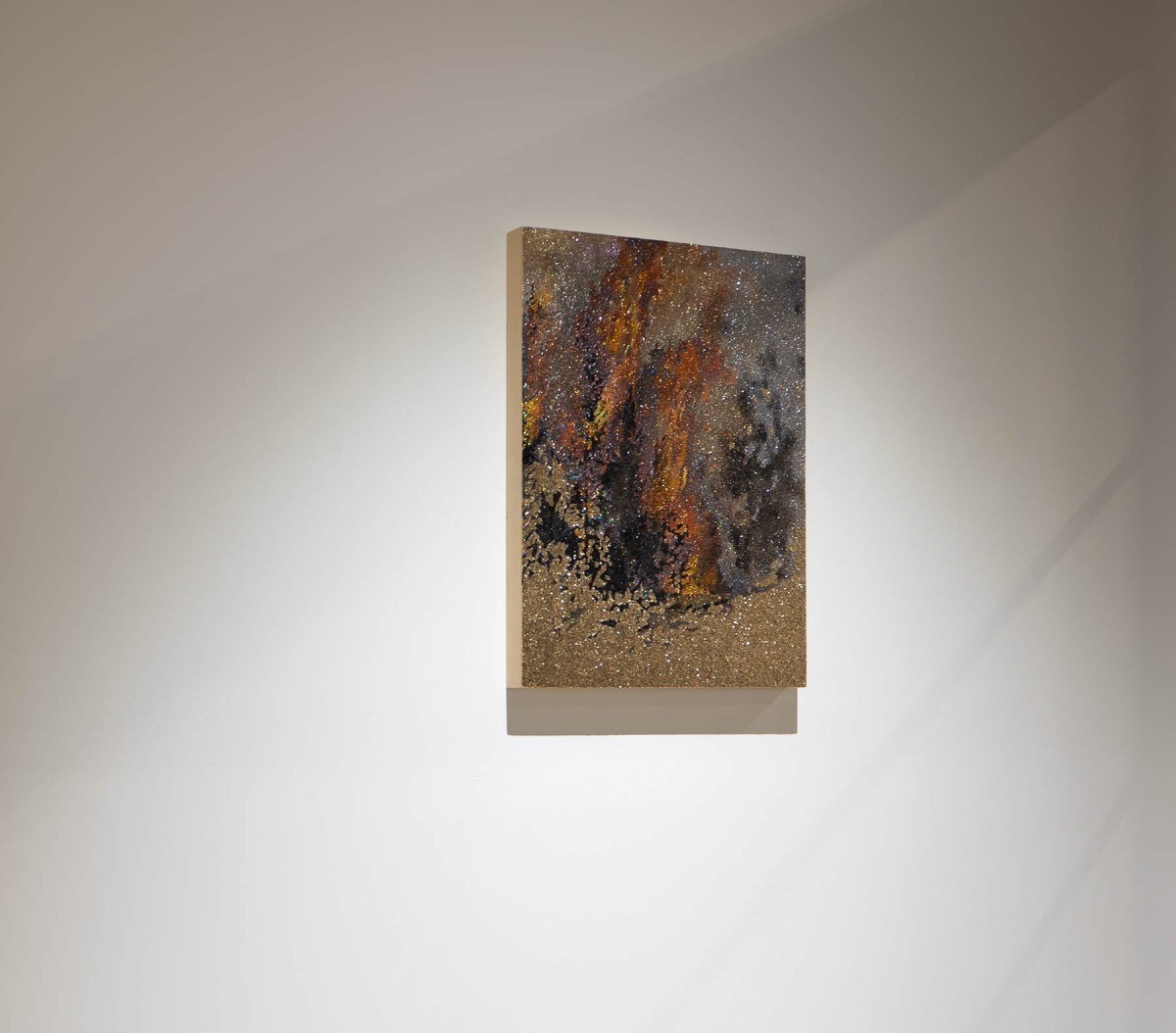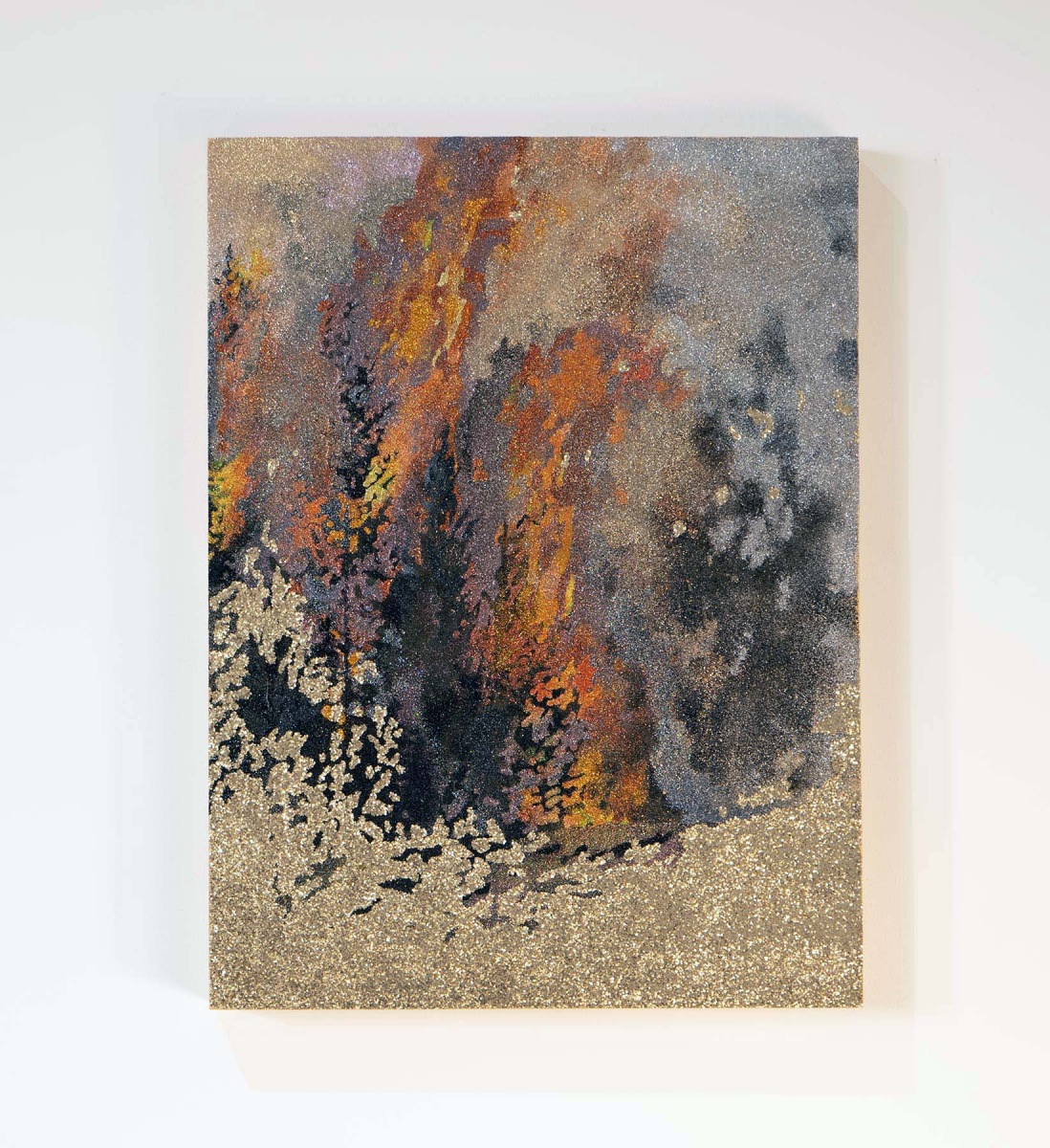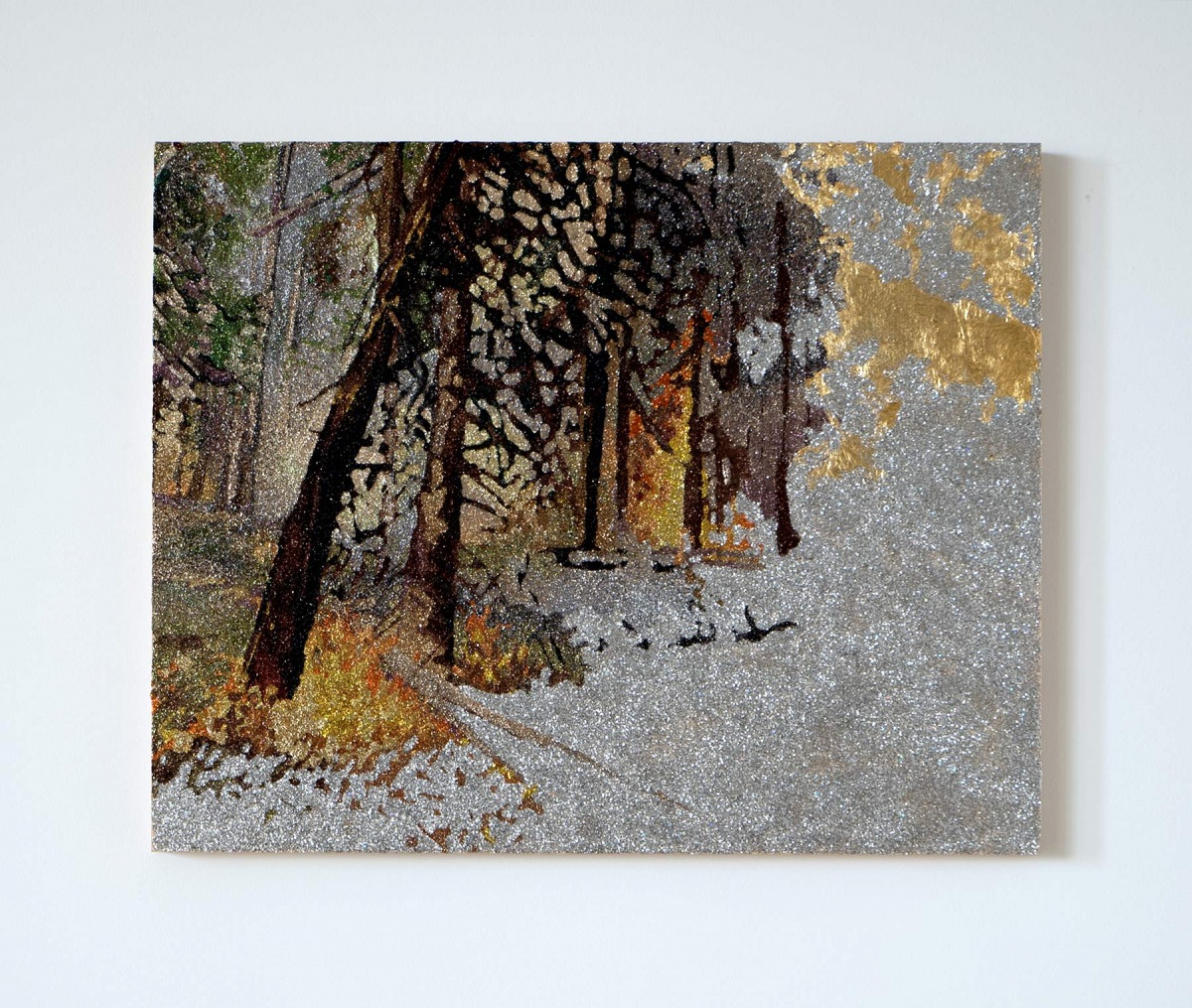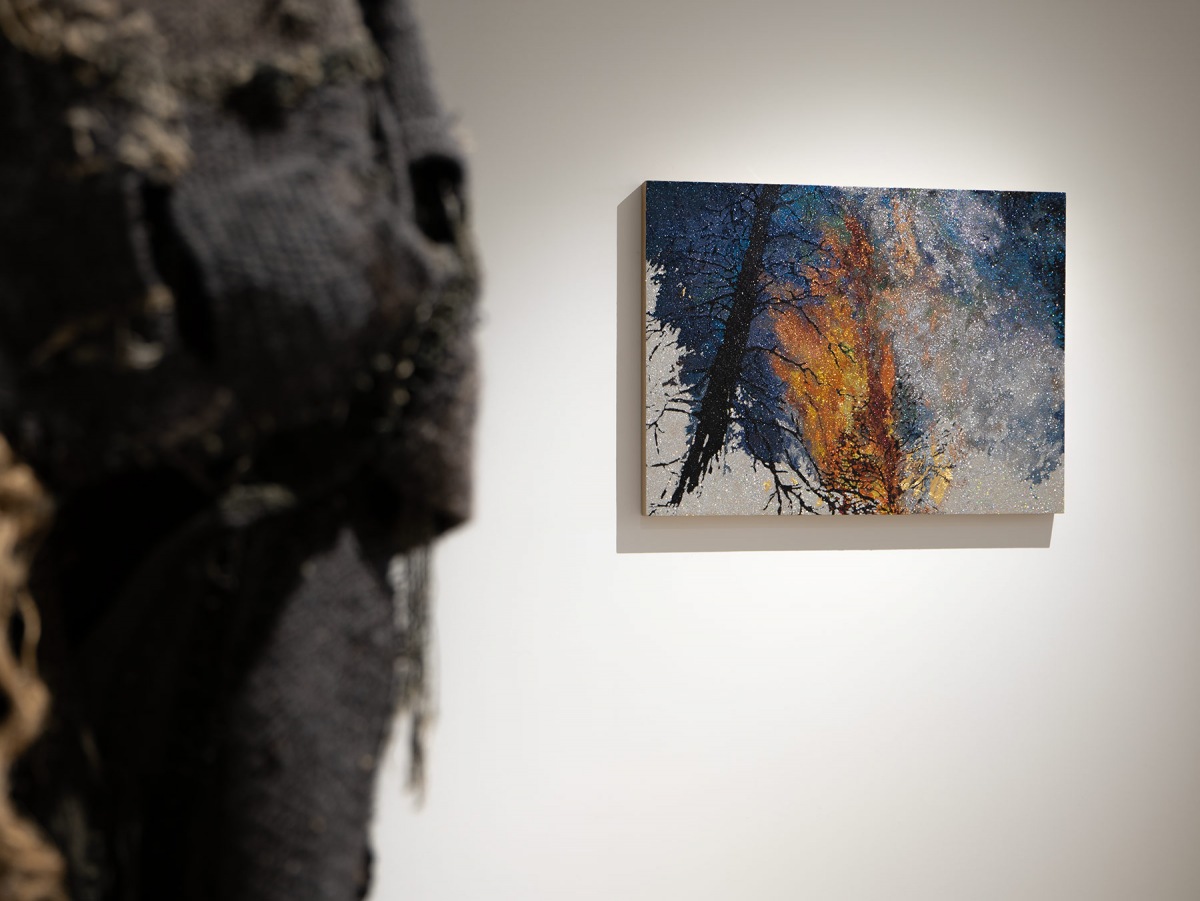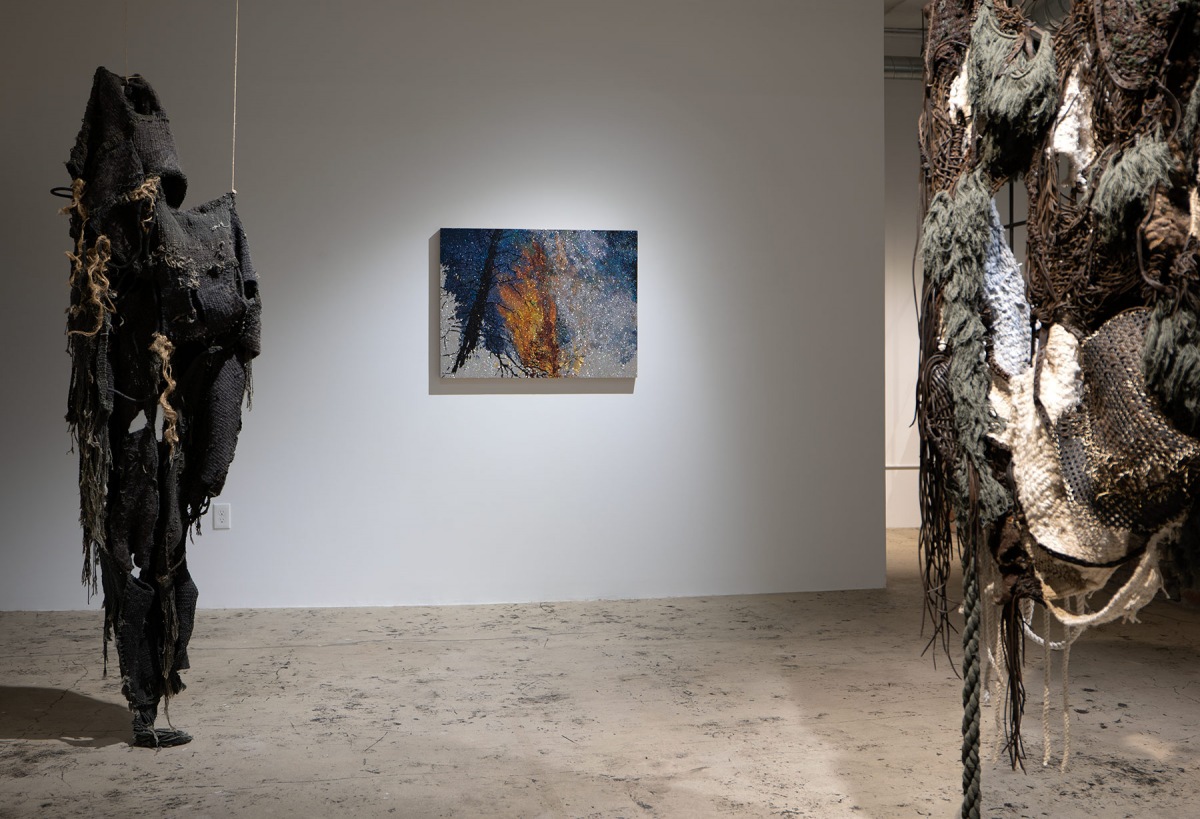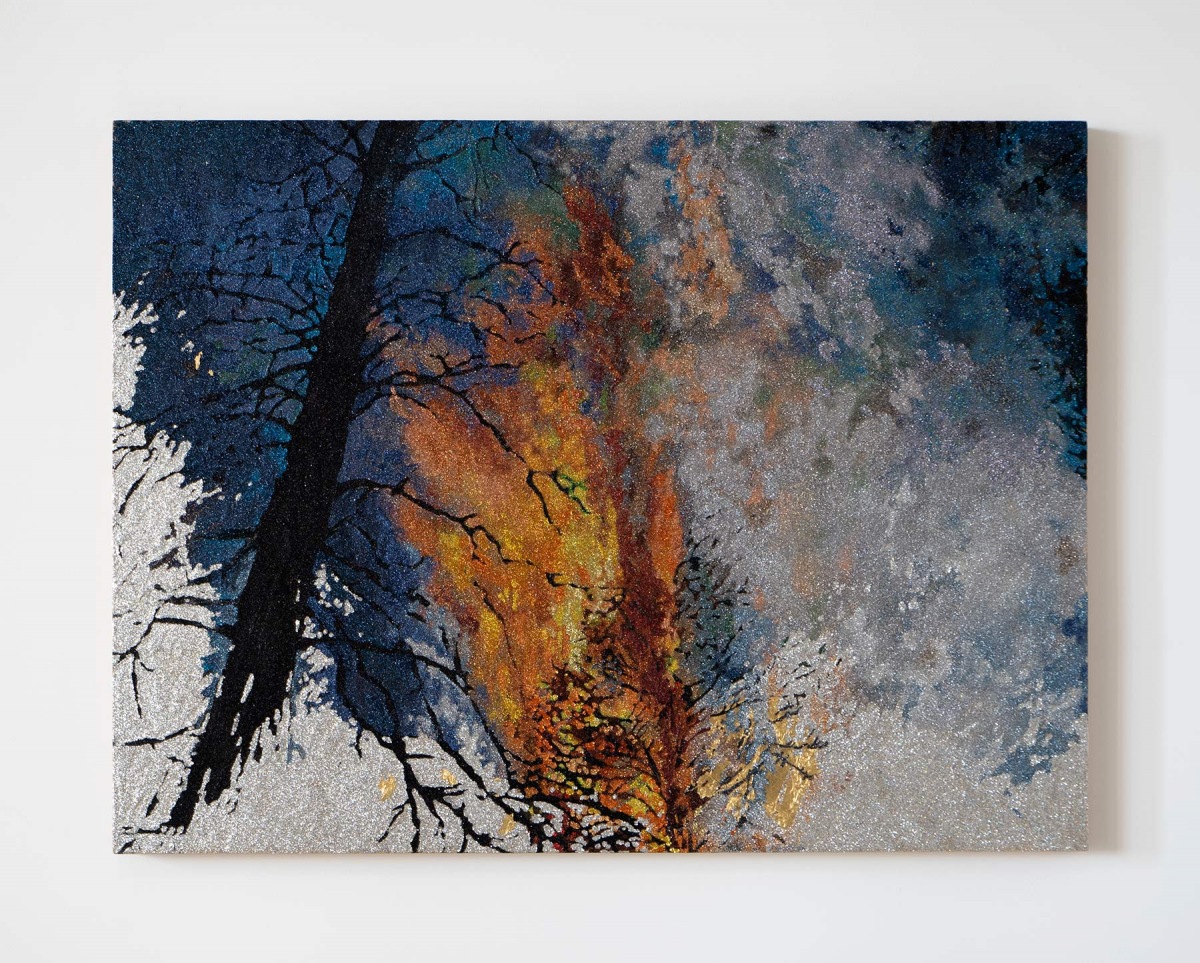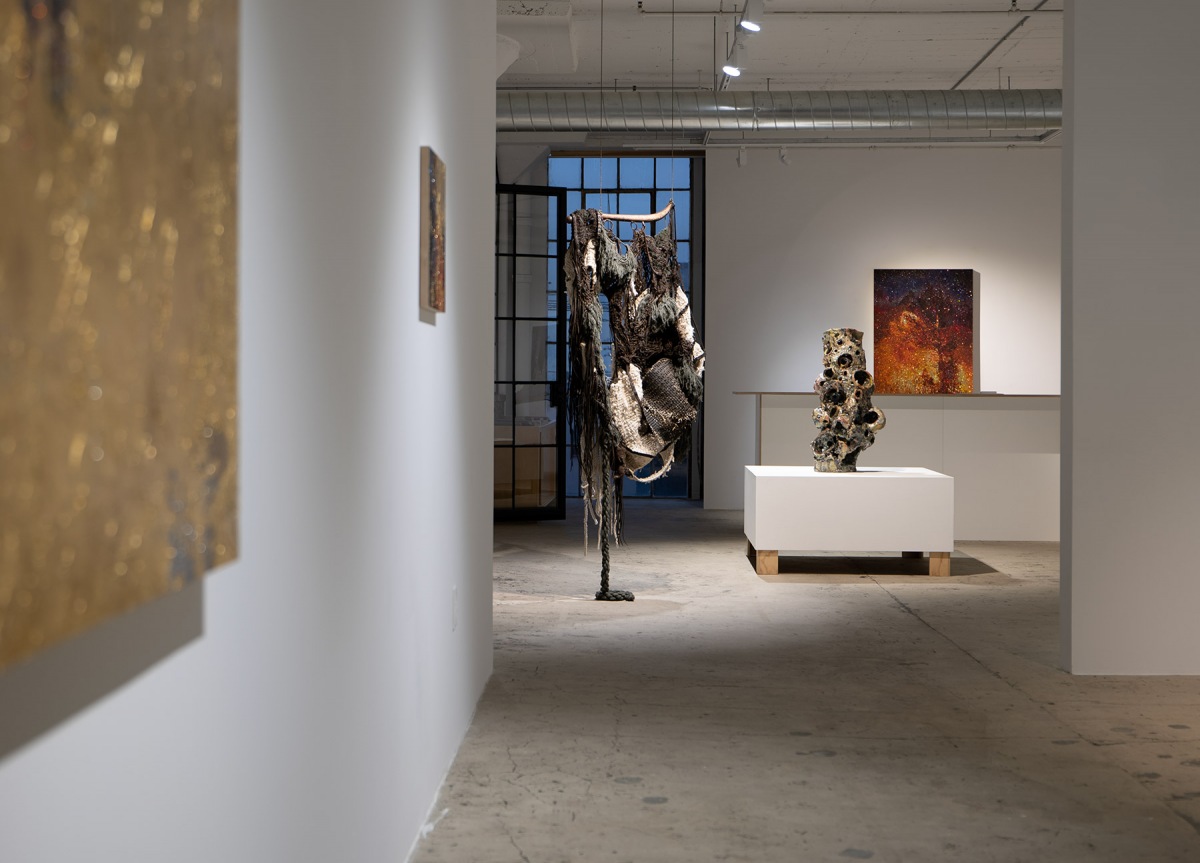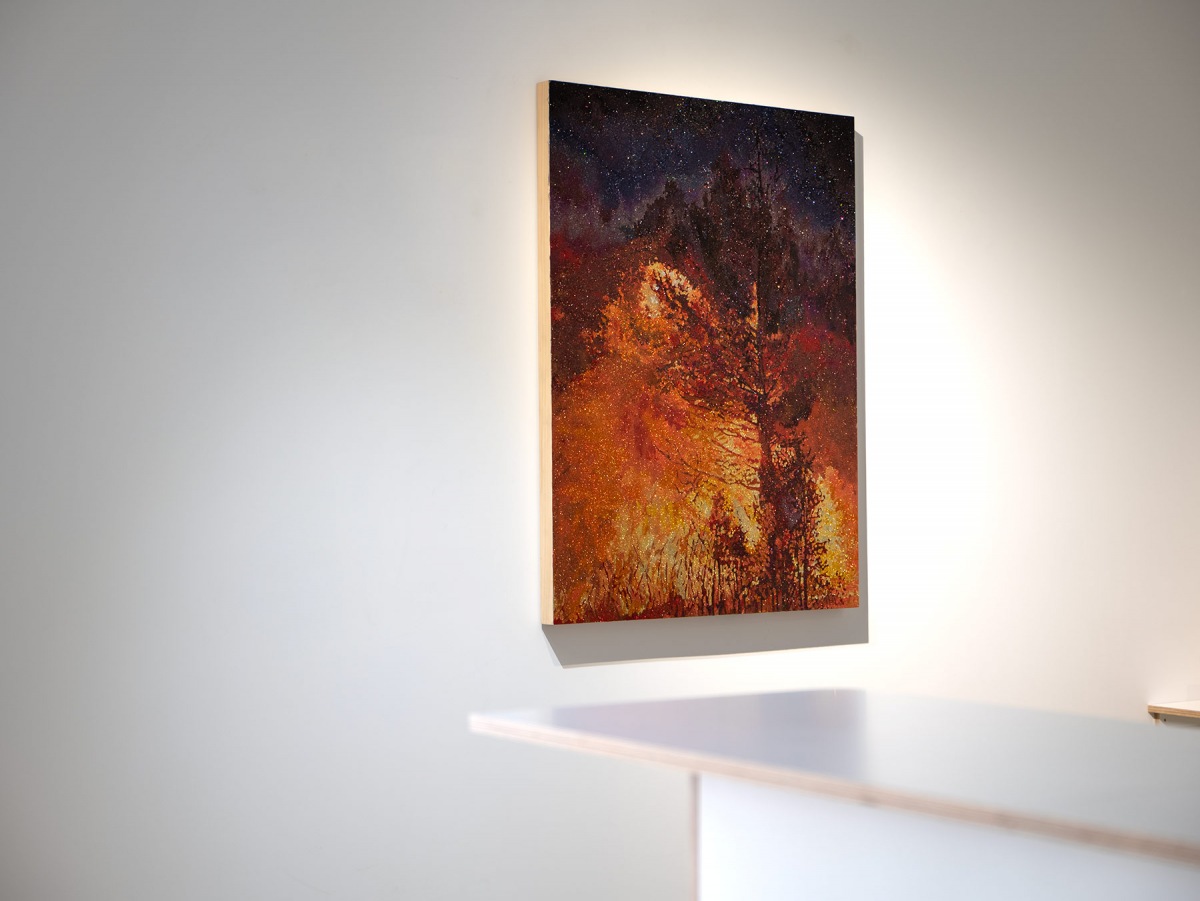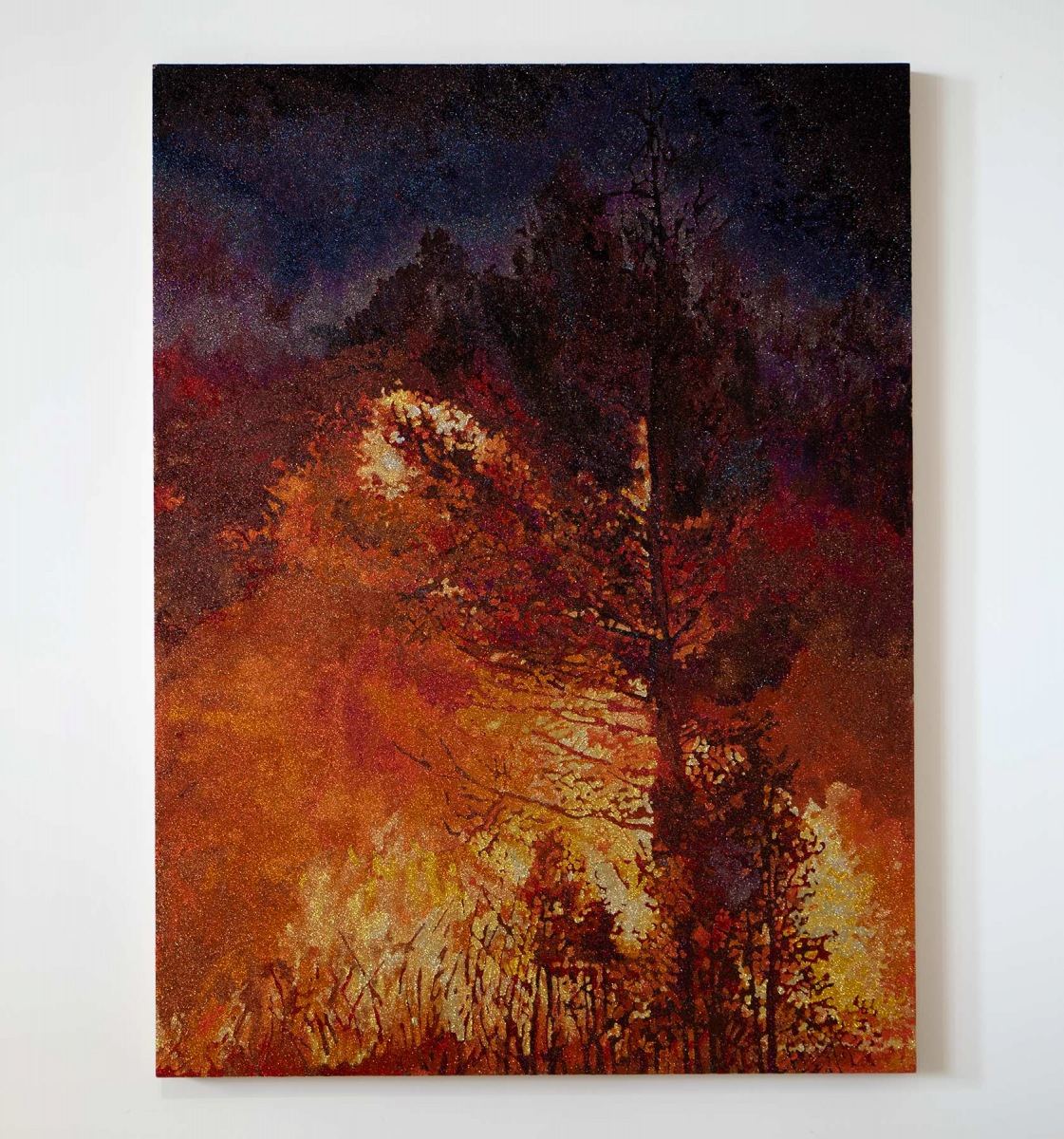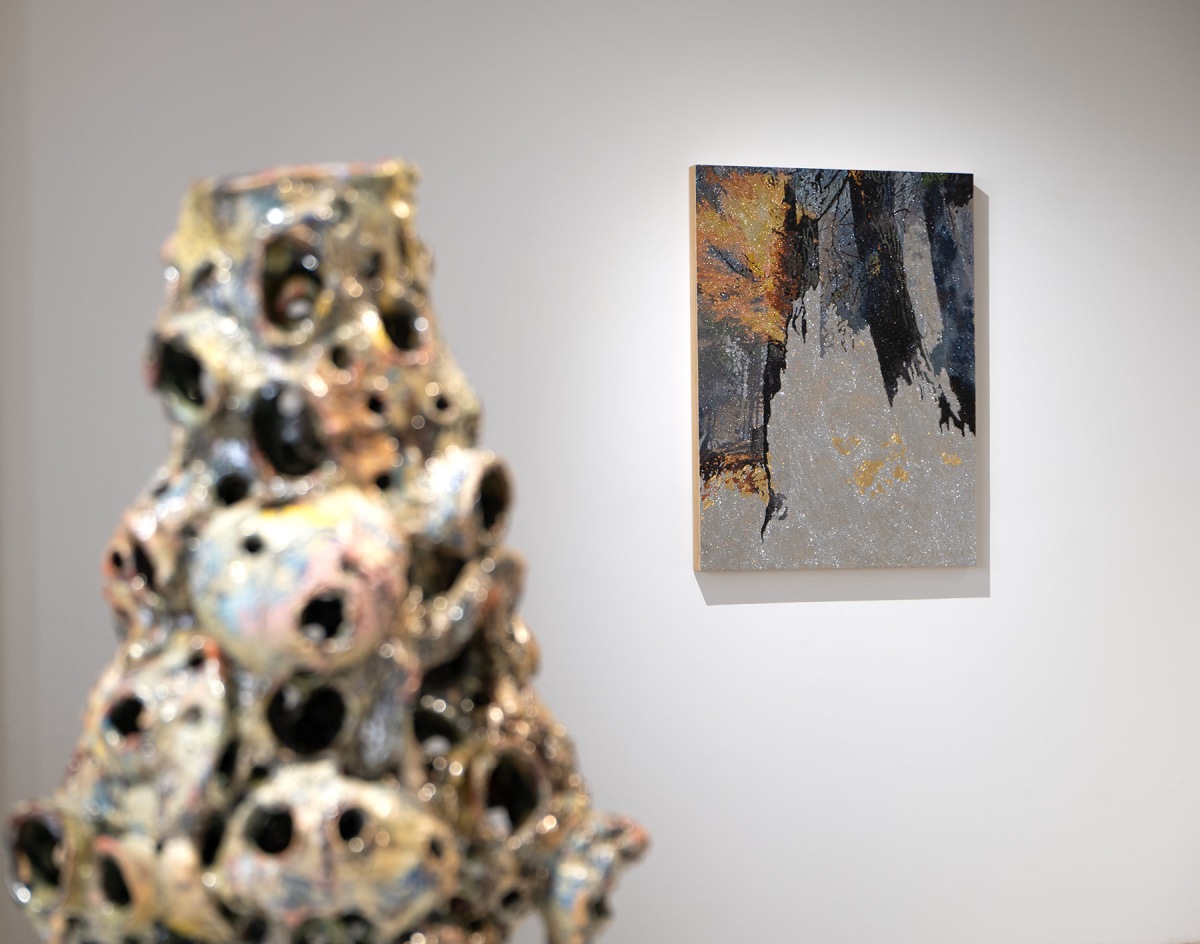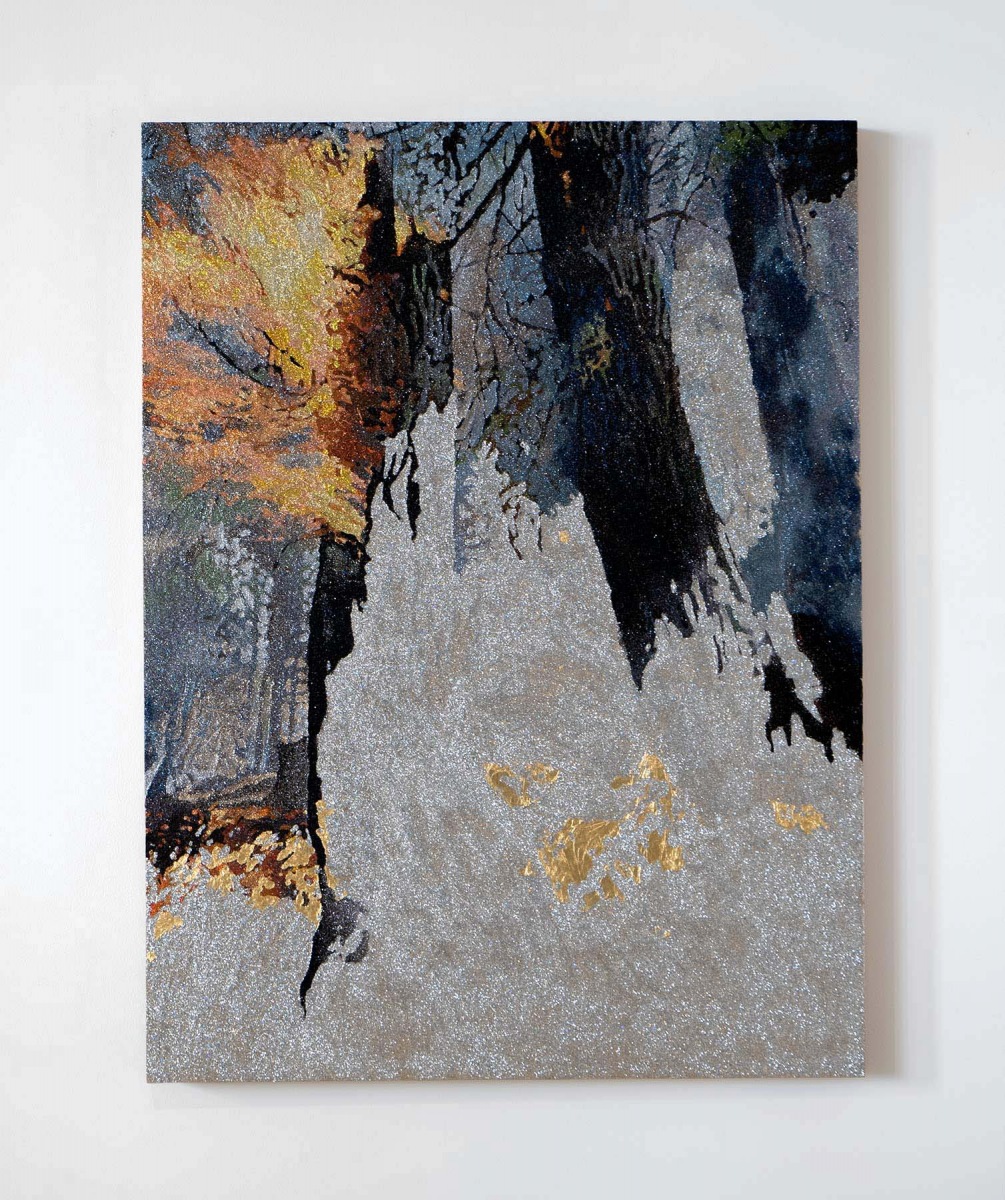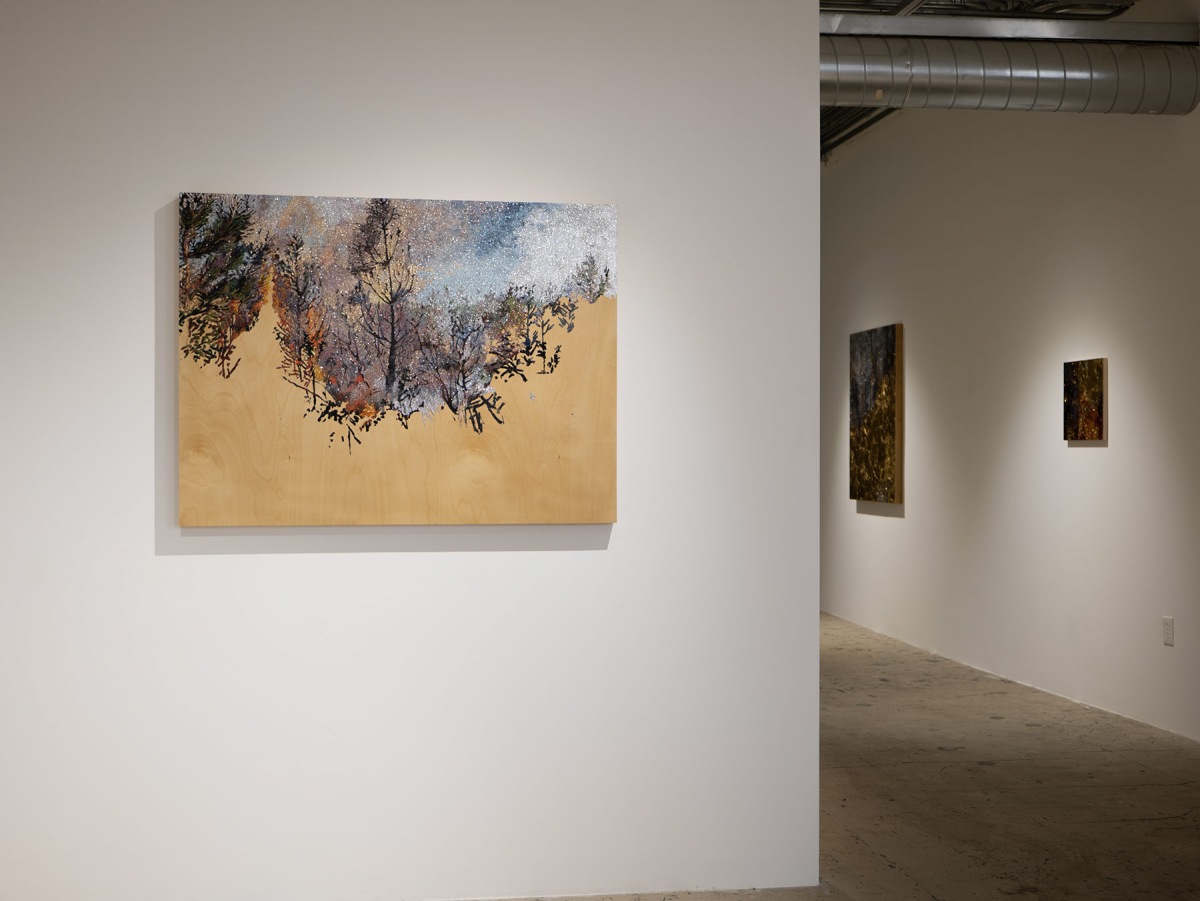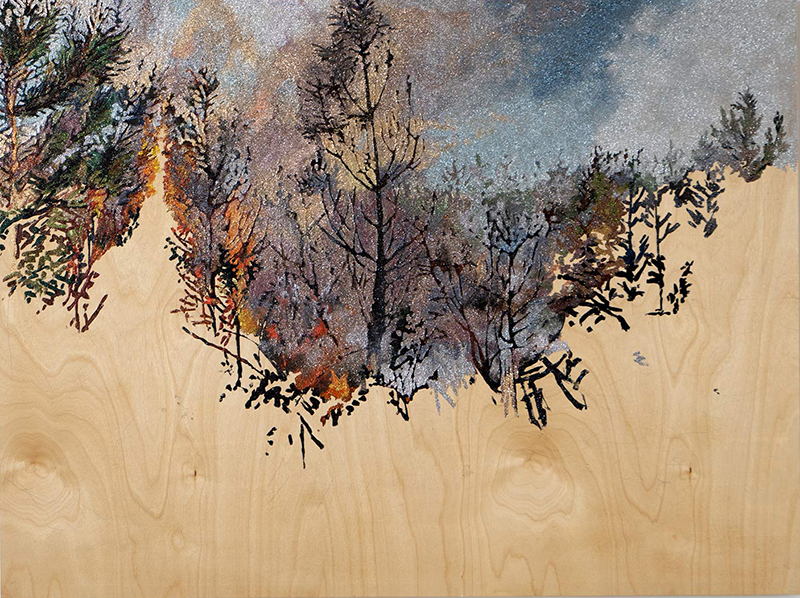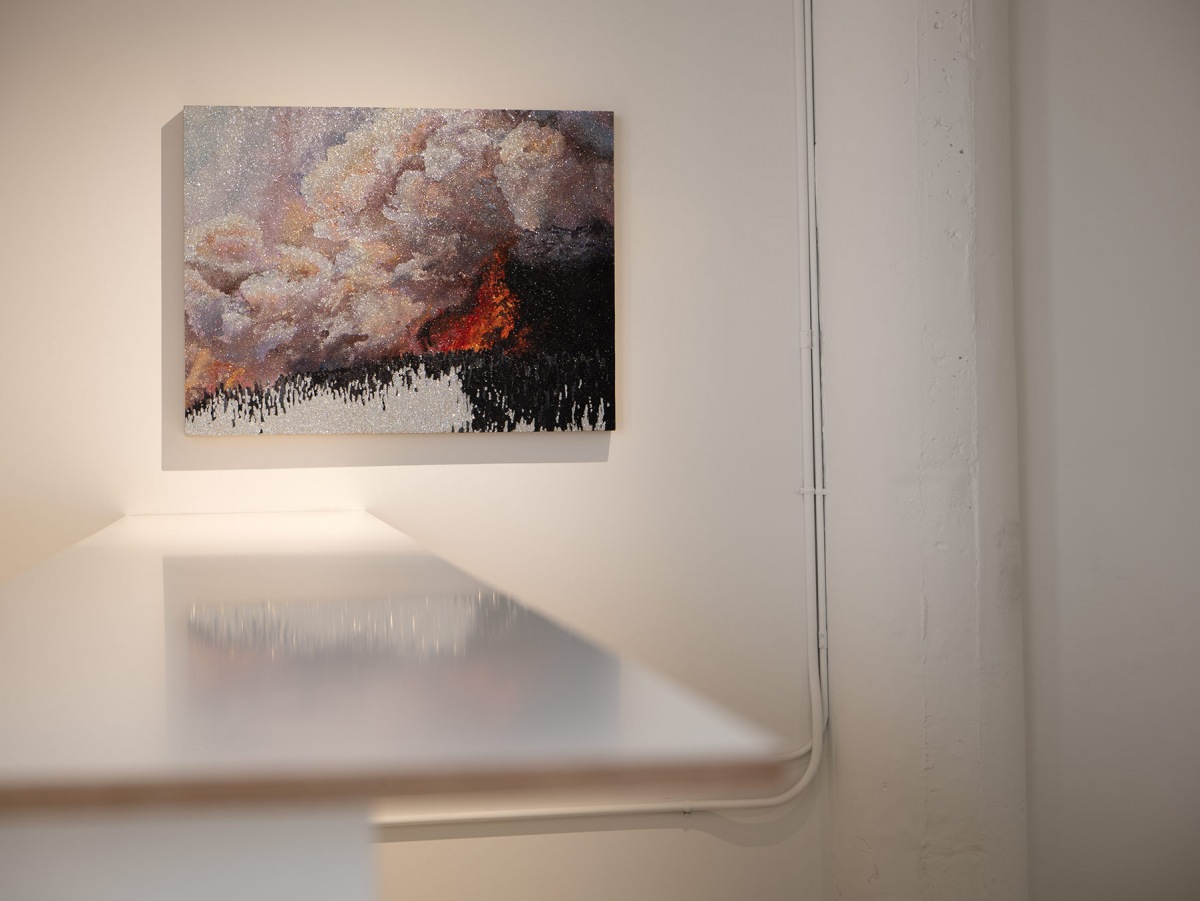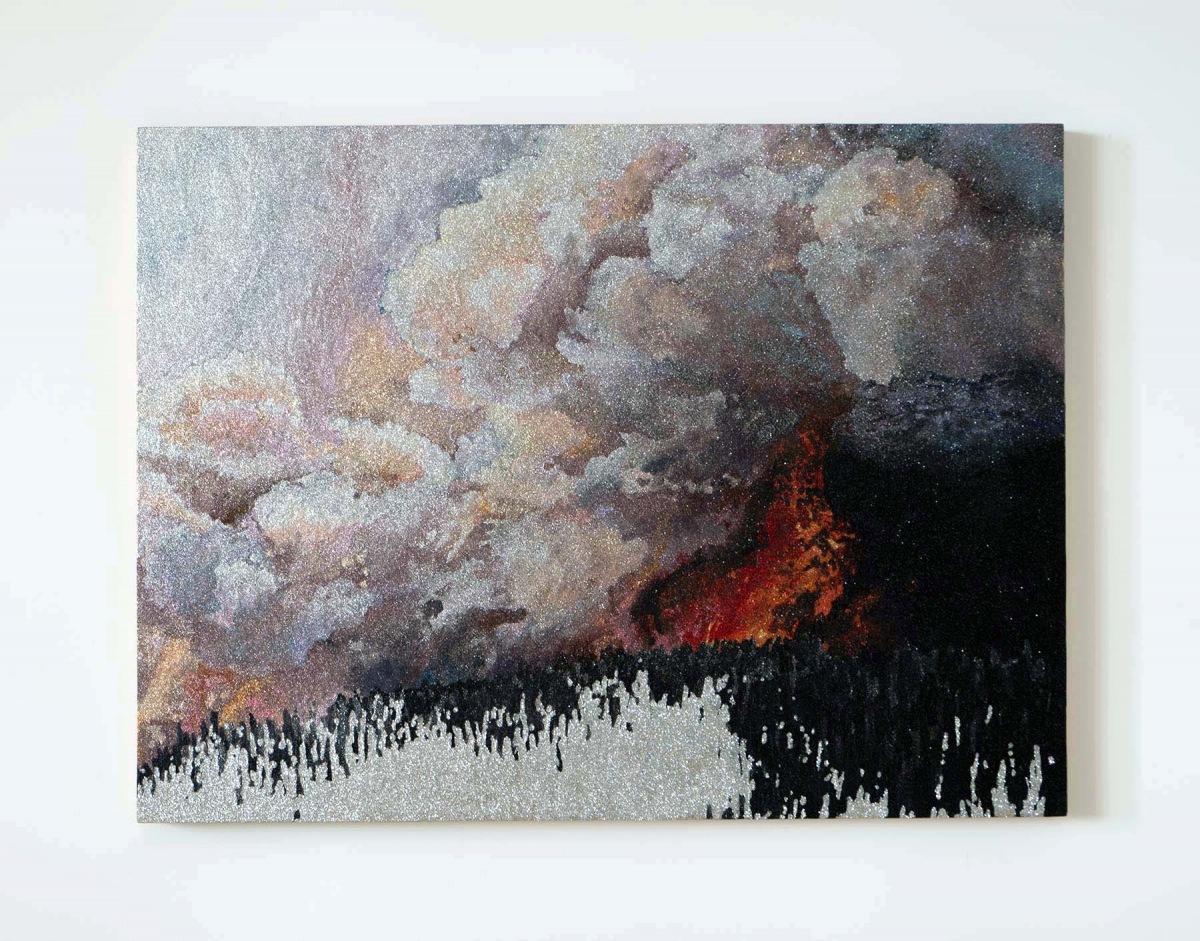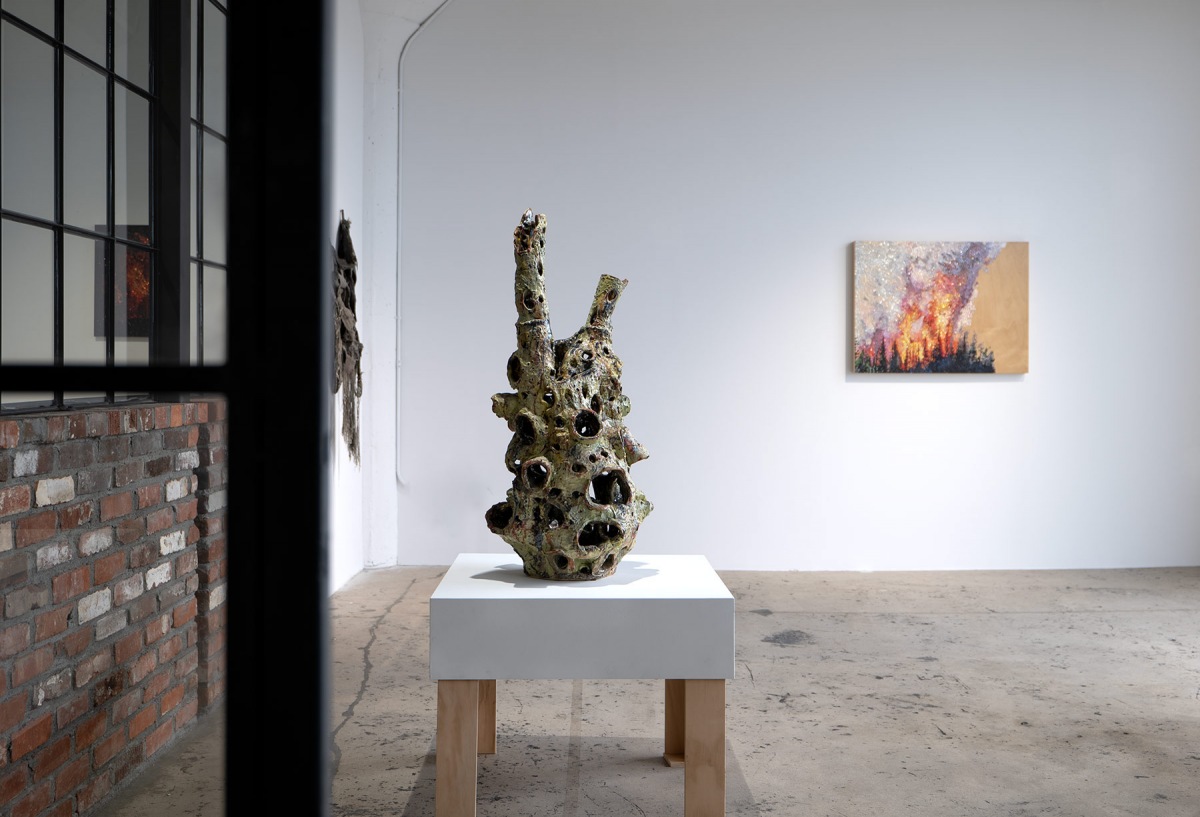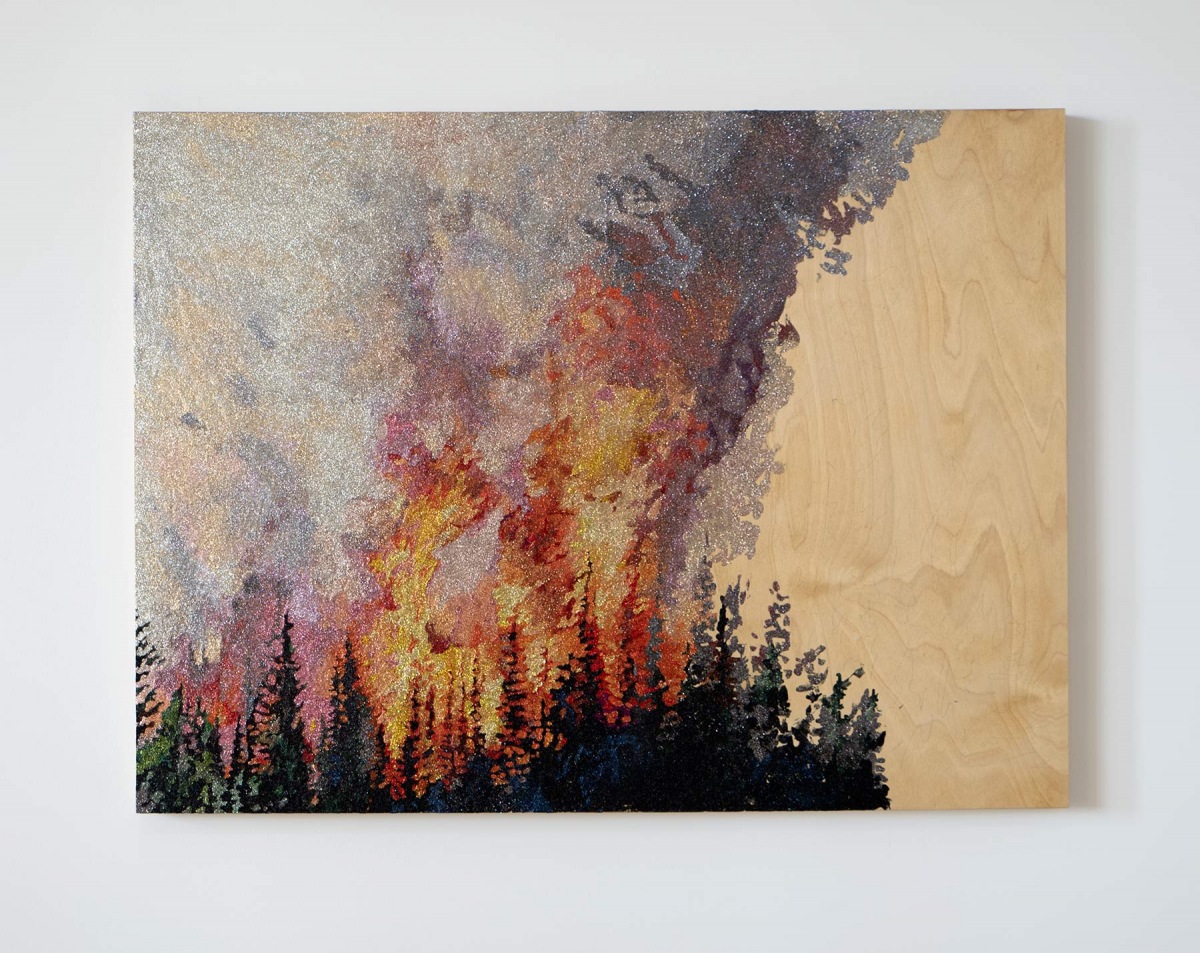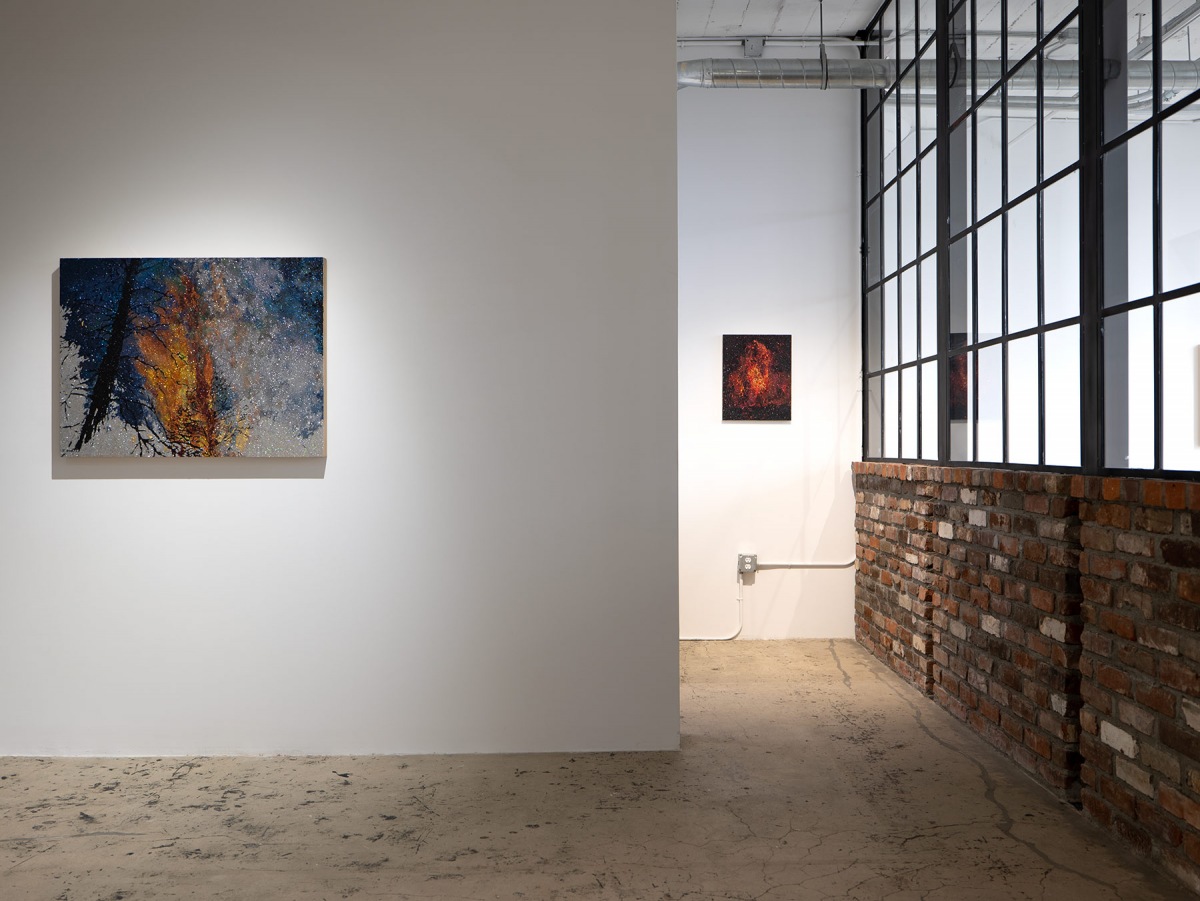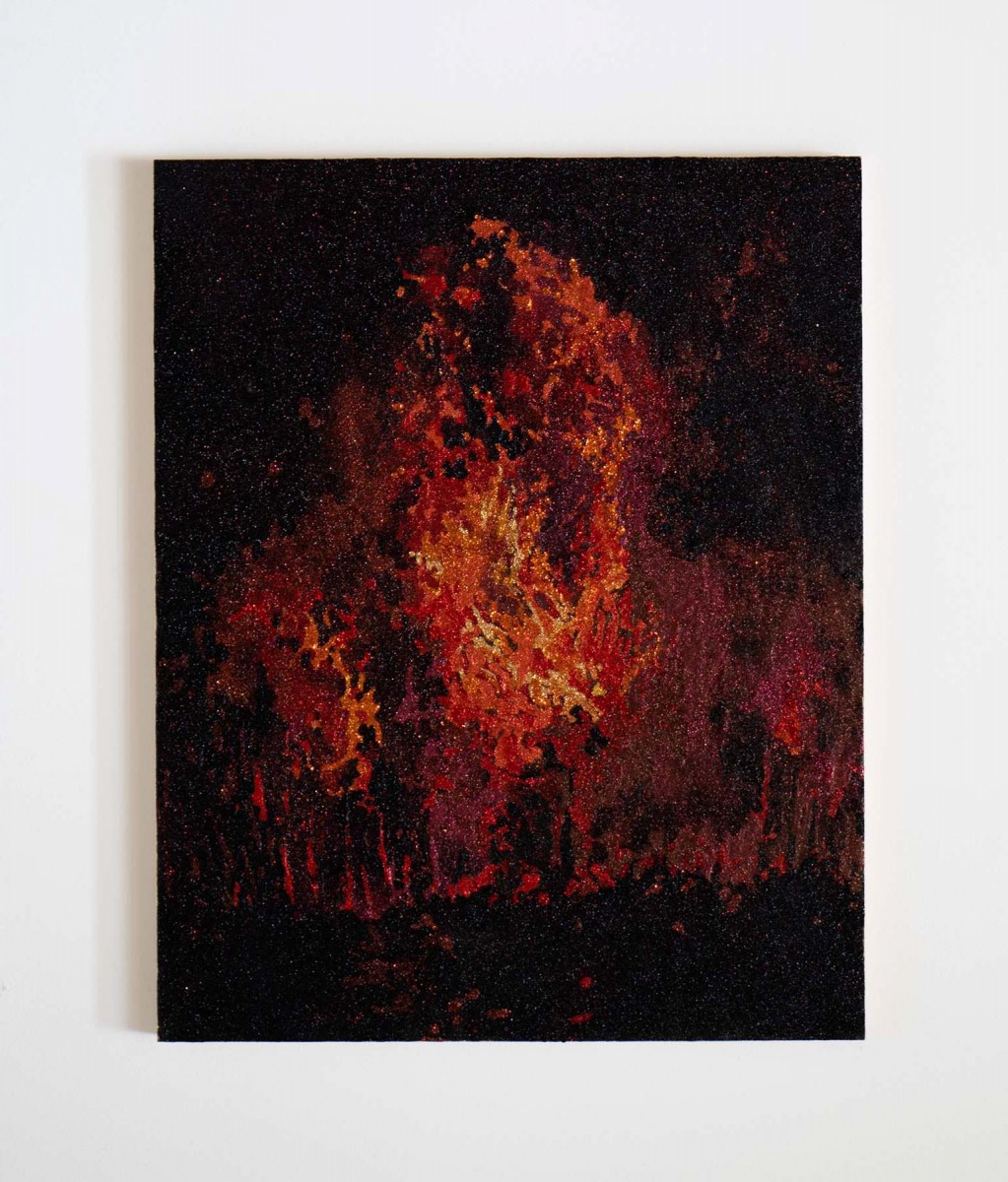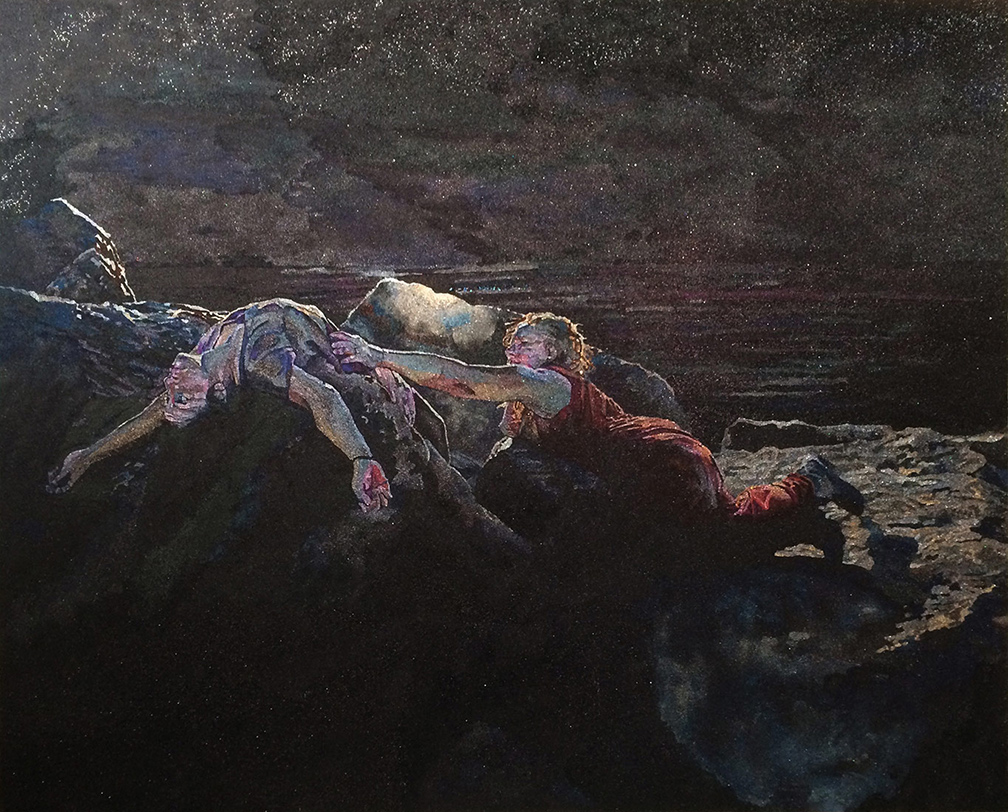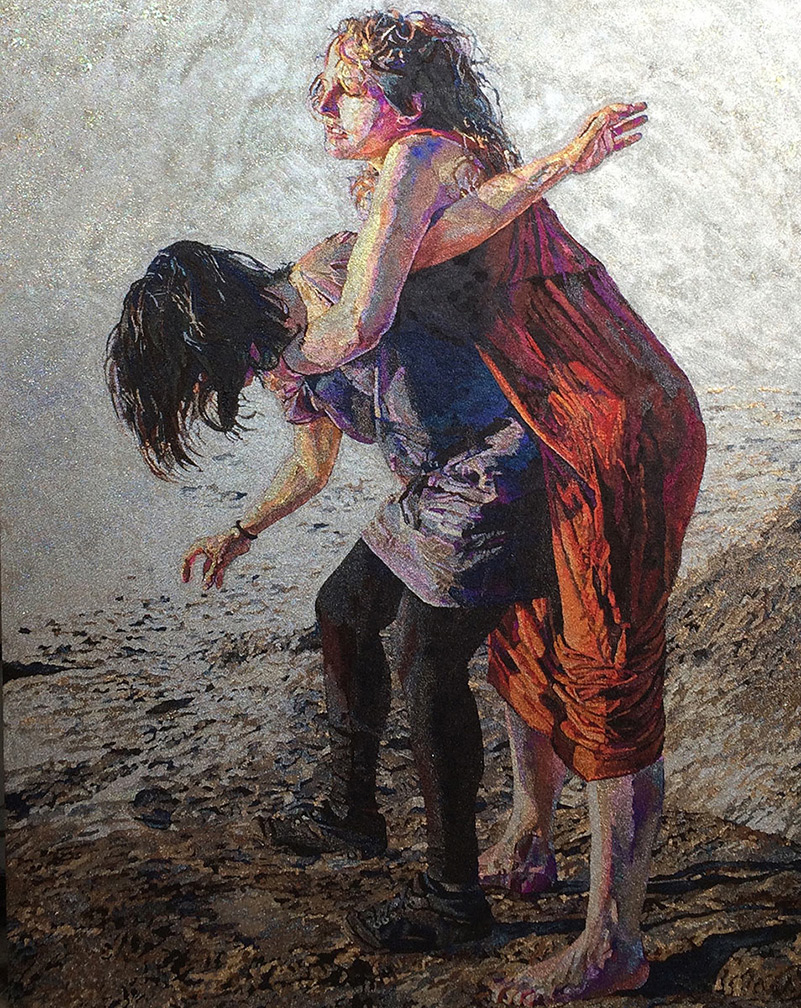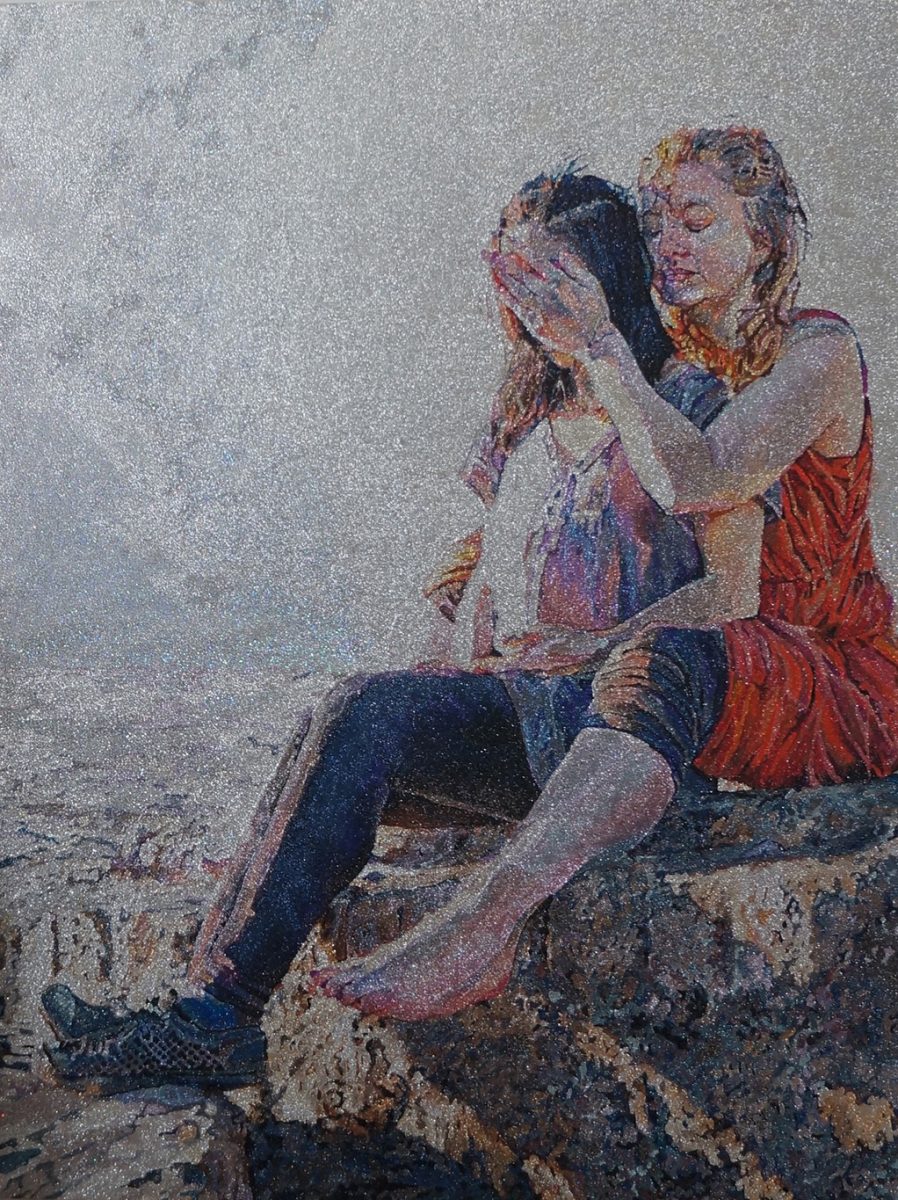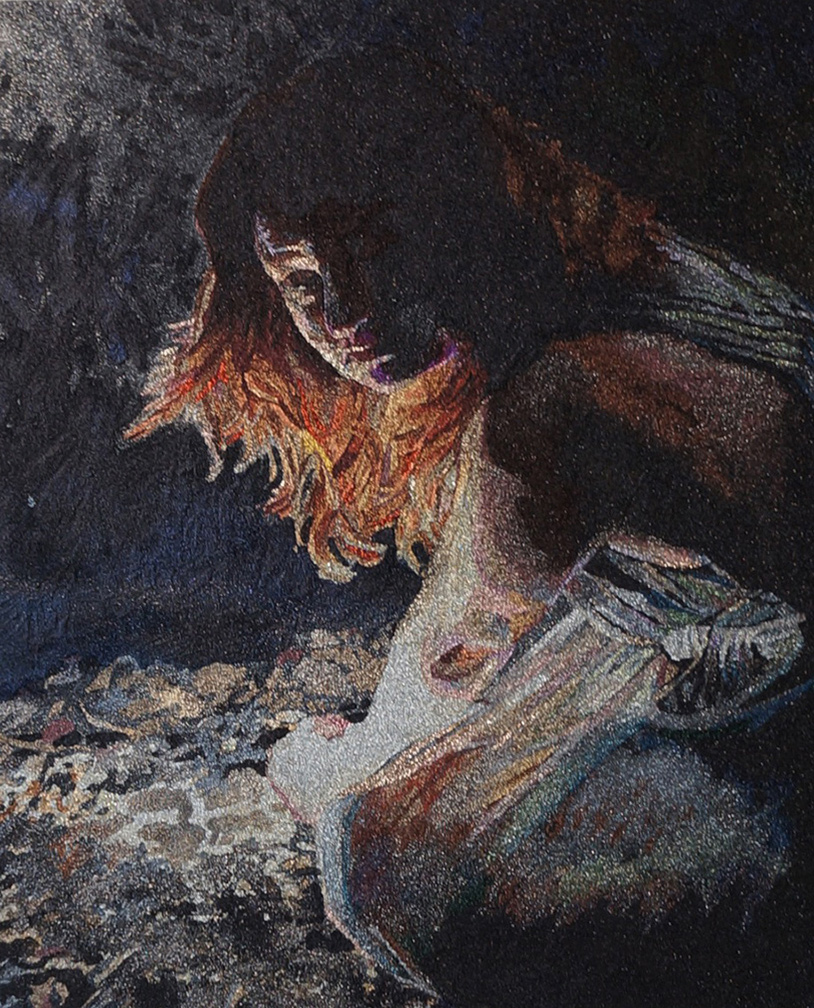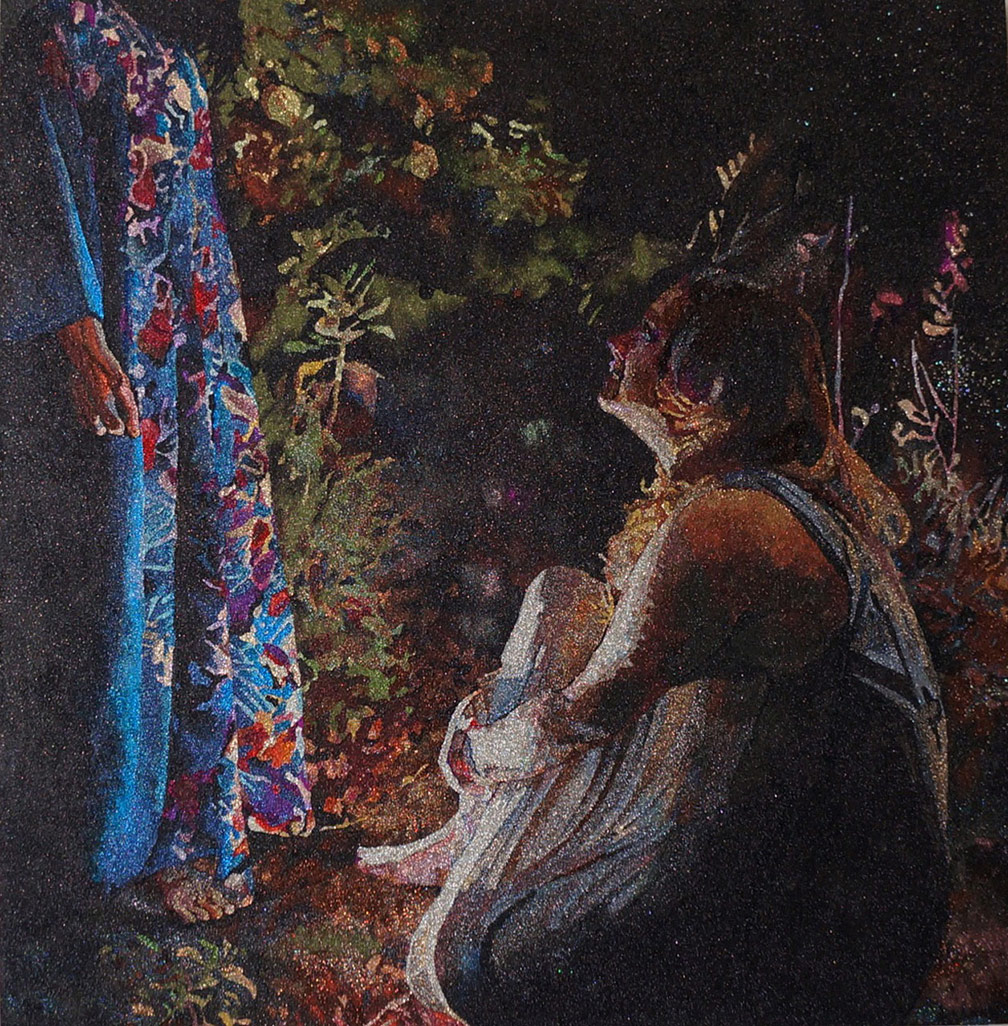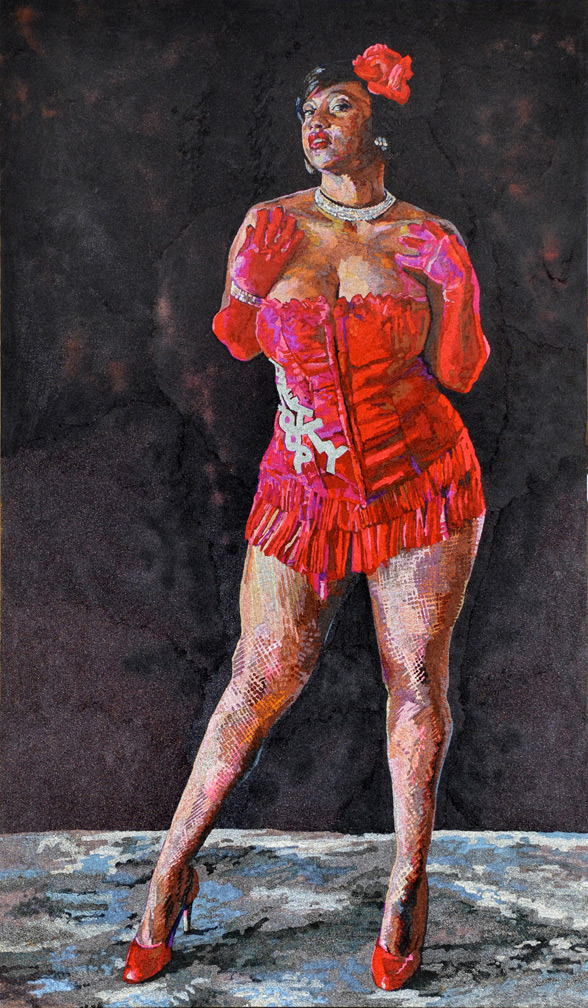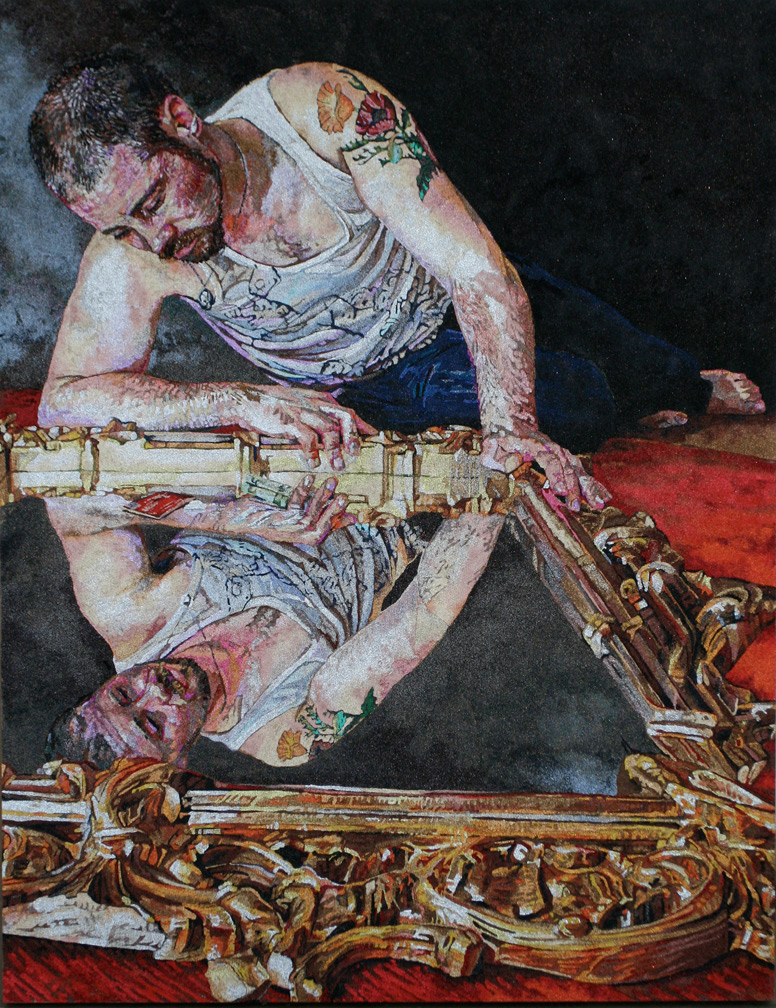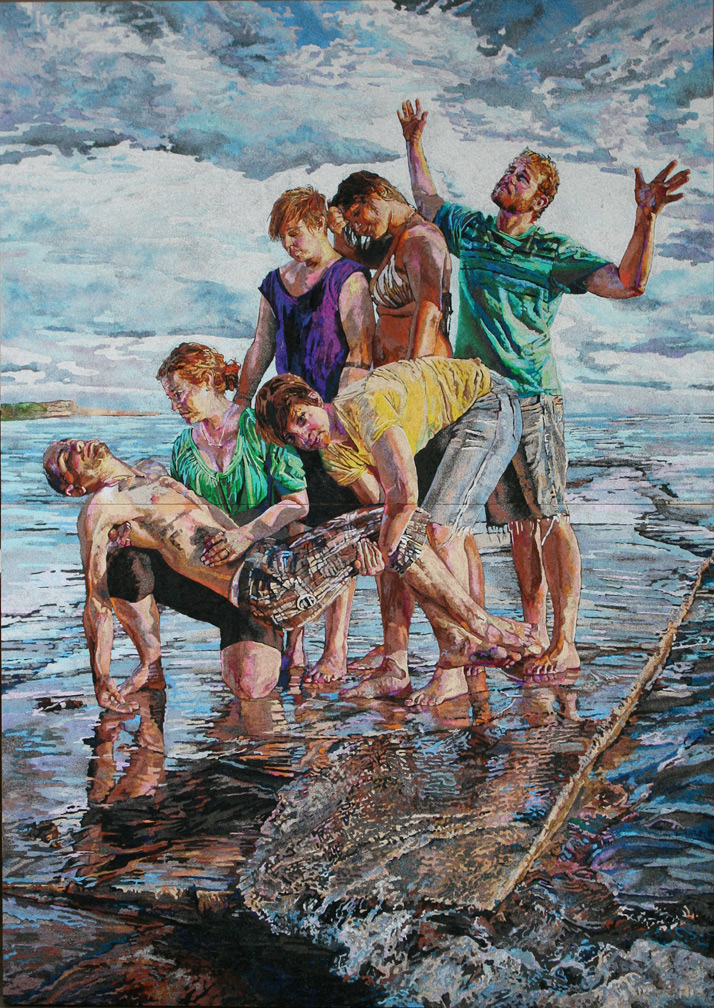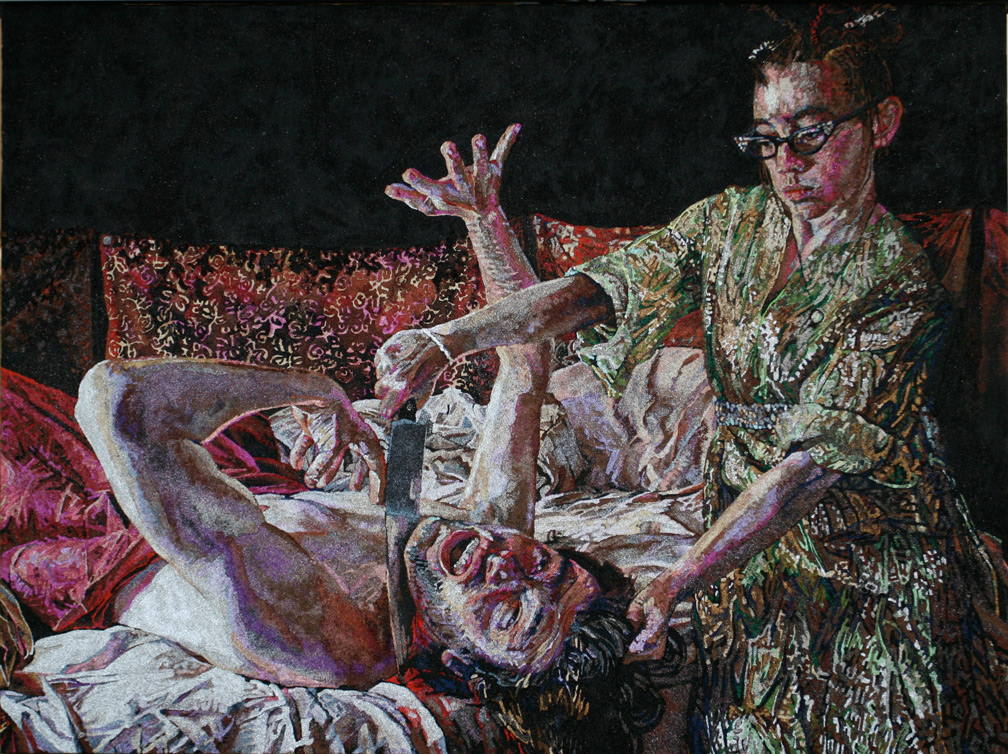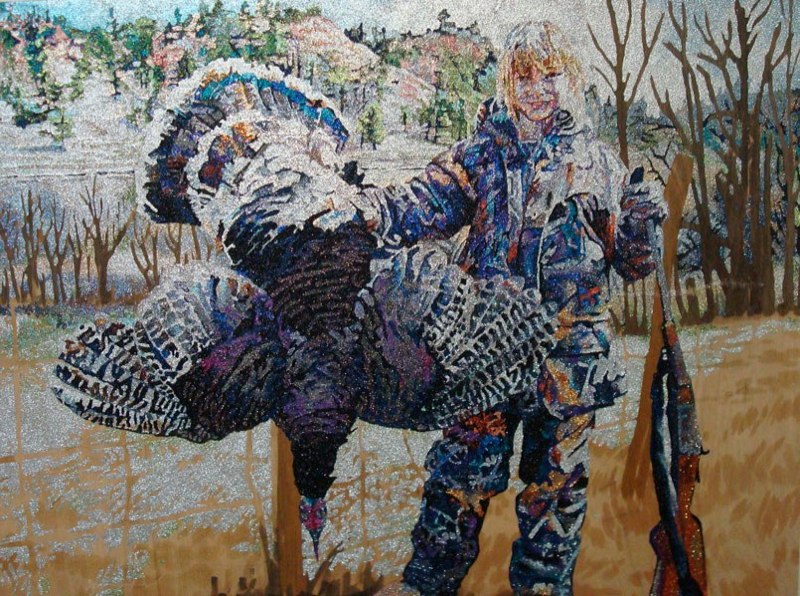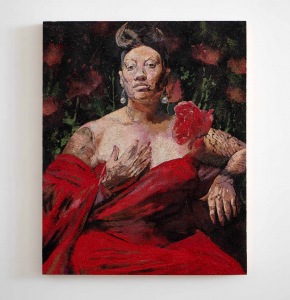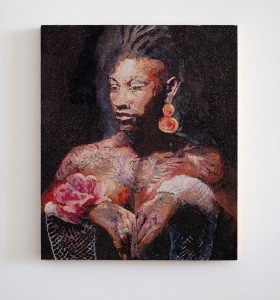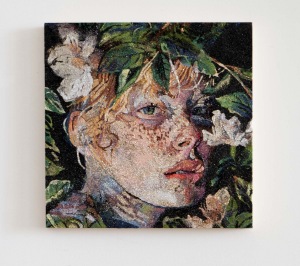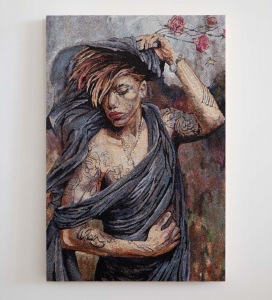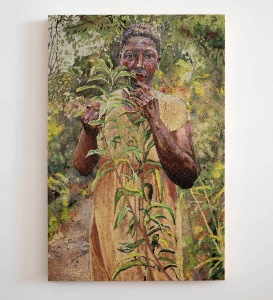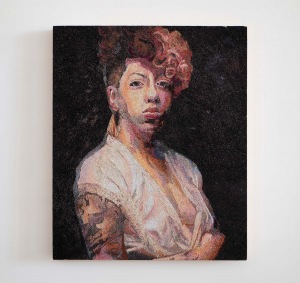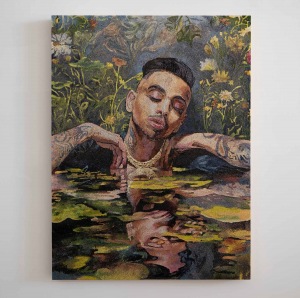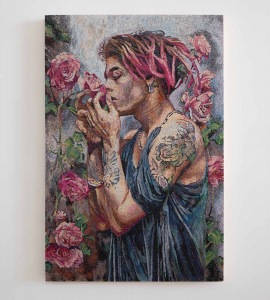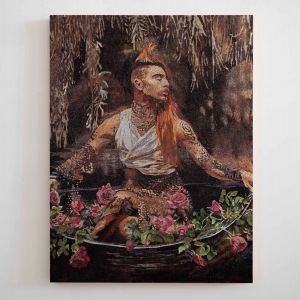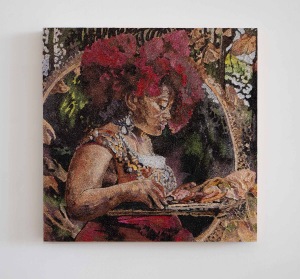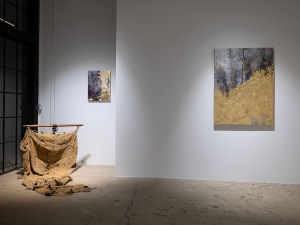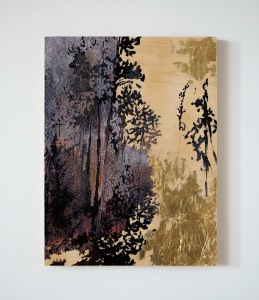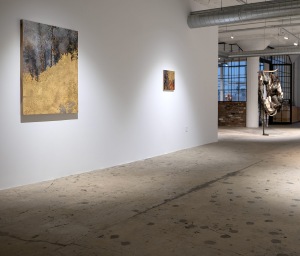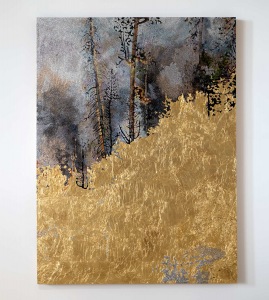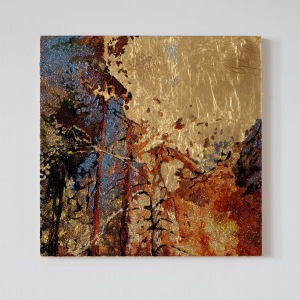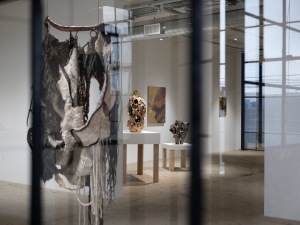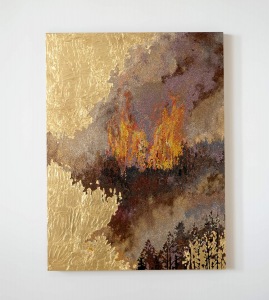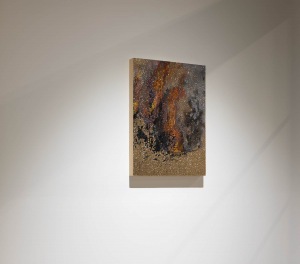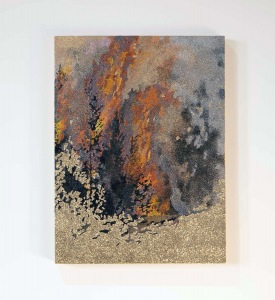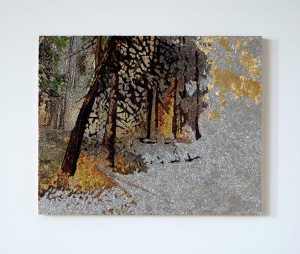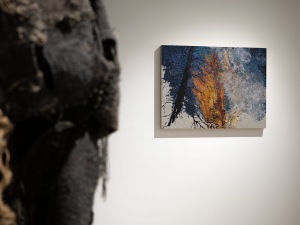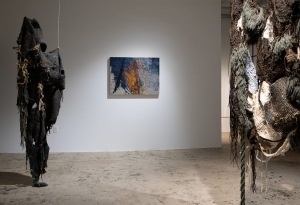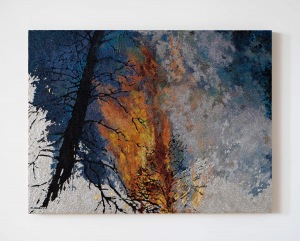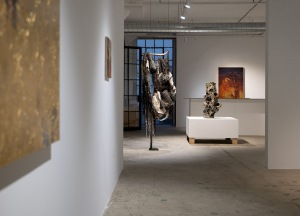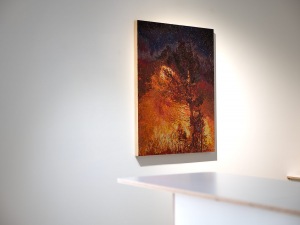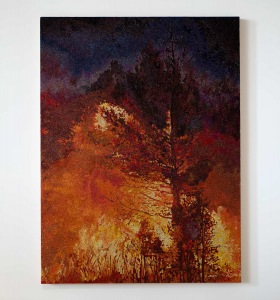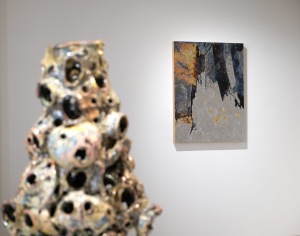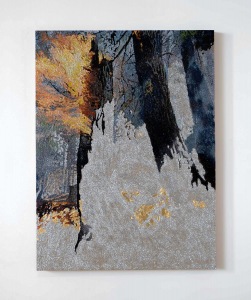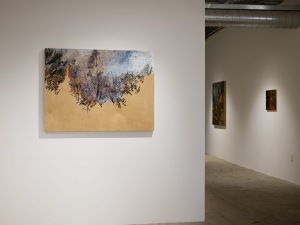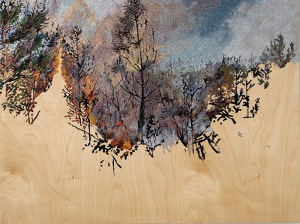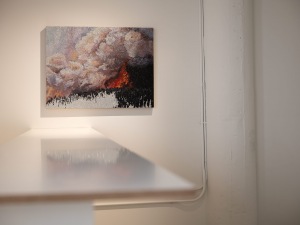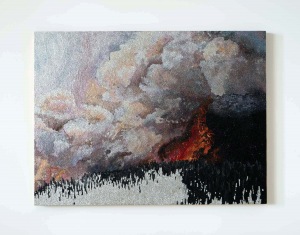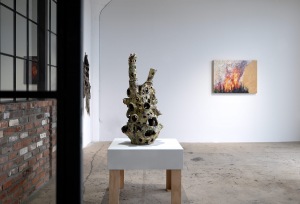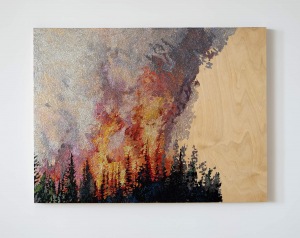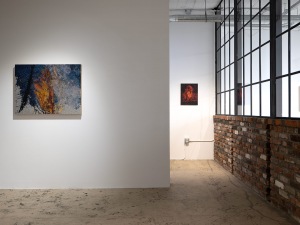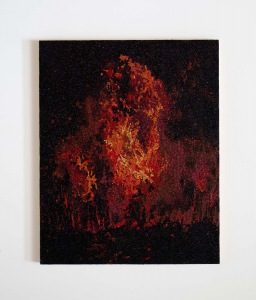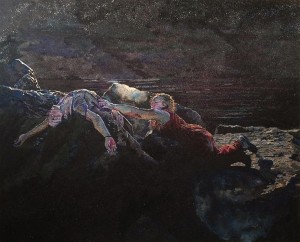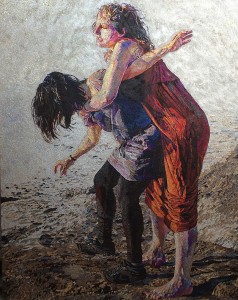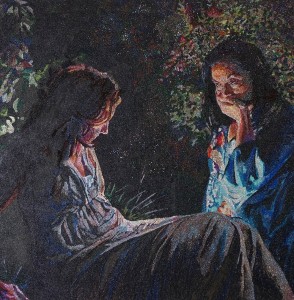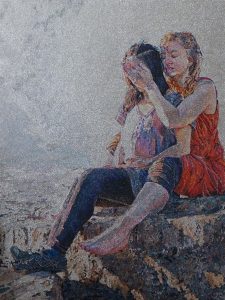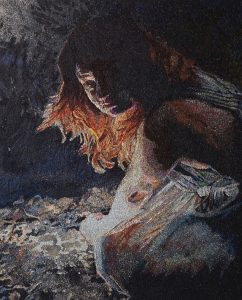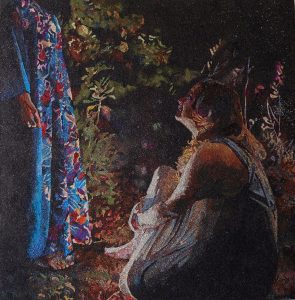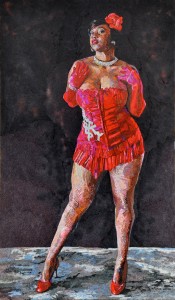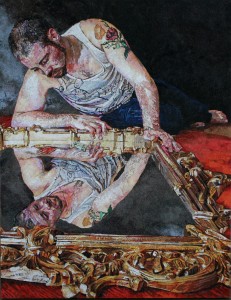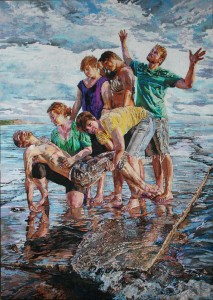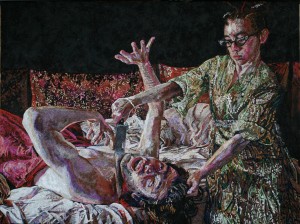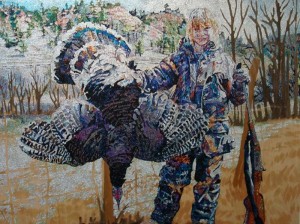Work
Videos
BIO
Vasta’s medium of choice, glitter has an elemental resonance carrying unexpected emotional resonance, however her masterly domination of material transforms the bombastic bits of reflective color to mannered, painterly refinement. Staging actors, friends and family within the LGBTQ + community, Vasta’s narrative series focus on art historical movements, contemporary culture and literary tales.
In her first exhibition Mustn’t in 2007, Vasta reframed Angela Carter’s feminist fairy tales depicting a mystical landscape where women with supernatural powers cavort in deadly play. Vasta’s second exhibition reflects the trophy portrait in glitter, this time with internet composites of adolescent females posed with their kill. Jamie Vasta then presented After Caravaggio – a contemporary reframing of Michelangelo Merisi da Caravaggio’s historic paintings. Vasta posed her coterie of friends and colleagues with props of today, turning gender and context on end. After the Hudson River School positioned Vasta’s glitter on wood landscapes in the traditions of 19th century landscape painting. True to her predilection of revisiting art history with a contemporary spin, Vasta turned her eye to the San Francisco Bay Area landscape as filtered through the lens of the Hudson River School of artists.
Eurydice is a tale of great love and loss. Offering inspiration to great luminaries throughout history such as Peter Paul Rubens and Poussin, Jamie Vasta joins these historical icons with her homage to the Greek tragedy of Orpheus and Eurydice. Orpheus, a great musician whose father was Apollo and mother Calliope, descends to the underworld hoping to resurrect his bride Eurydice, who tragically dies from the the viper’s bite on the night of their wedding. He brings his lyre and power of song to woo the Lord of the Dead. Struck by his song the Lord allows Eurydice to ascend with Orpheus upon condition Orpheus not look back at Eurydice. As Orpheus enters daylight he turns to look at Eurydice who tragically still hovers in the dark cavern, condemning her to death forever.
From this tale of human limitations, Vasta depicts two costumed women in loose classical Maxfield Parrish like garments. The two actors enact film stills from a non-linear ghost story, playing out tableaus of grief and longing. In the bright silver works “The Dream” and “Tempest”, the figures become islands of color and solidity in the bleak desert beach. Scatters of prismatic glitter shoot sparks across the blown-out brilliant sky. A tender embrace turns to obsessive clutching and restraint, the sunny day turns harsh. In “Visitation” and “See Mystery Lights”, the loosely rendered figures emerge out of the darkness, disappearing when light reflects off the dark surface.
The most recent series of works (2024), The Pre-Raphaelites, are strikingly romantic, lush, and detailed. The original Pre-Raphaelites were a clandestine society of artists, founded in London in 1848. Inspired by the theories of the influential writer and art critic John Ruskin (1819–1900), who argued that artists should devote themselves to truth found in nature, the Pre-Raphaelites rejected the British Royal Academy’s preference for Victorian subjects and styles; instead, championing subjects from literature and poetry, particularly those dealing with religion, love and death. They subscribed to a supposed moral, natural environnment found in the medieval era, which they viewed as the antithesis to the industrial age. Ruskin admired the Pre-Raphaelites dedication to working en plein air, their minute botanical accuracy, and their defiance of the prevailing codes of moral and artistic inquiry.
The Pre-Raphaelites melodramatic characteristics are a ‘Siren Call’ to Jamie Vasta, whose imagination is fueled by the beguiling amplification glitter delivers. I recommend you don those rose-tinted glasses and plunge into Queer splendor with reimagined Pre-Raphaelite-Queer portraits!!
Jamie Vasta received her MFA from the California College of Arts in 2007. Her work has been reviewed in Artillery, Art in America, Art Forum, art LTD, Modern Art Obsession, The Boston Globe, New York Times, SF Weekly, and The Bay Guardian. Vasta is included in many prestigious public and private collections, including the Berkeley Art Museum, Berkeley and the Crocker Art Museum, Sacramento.
